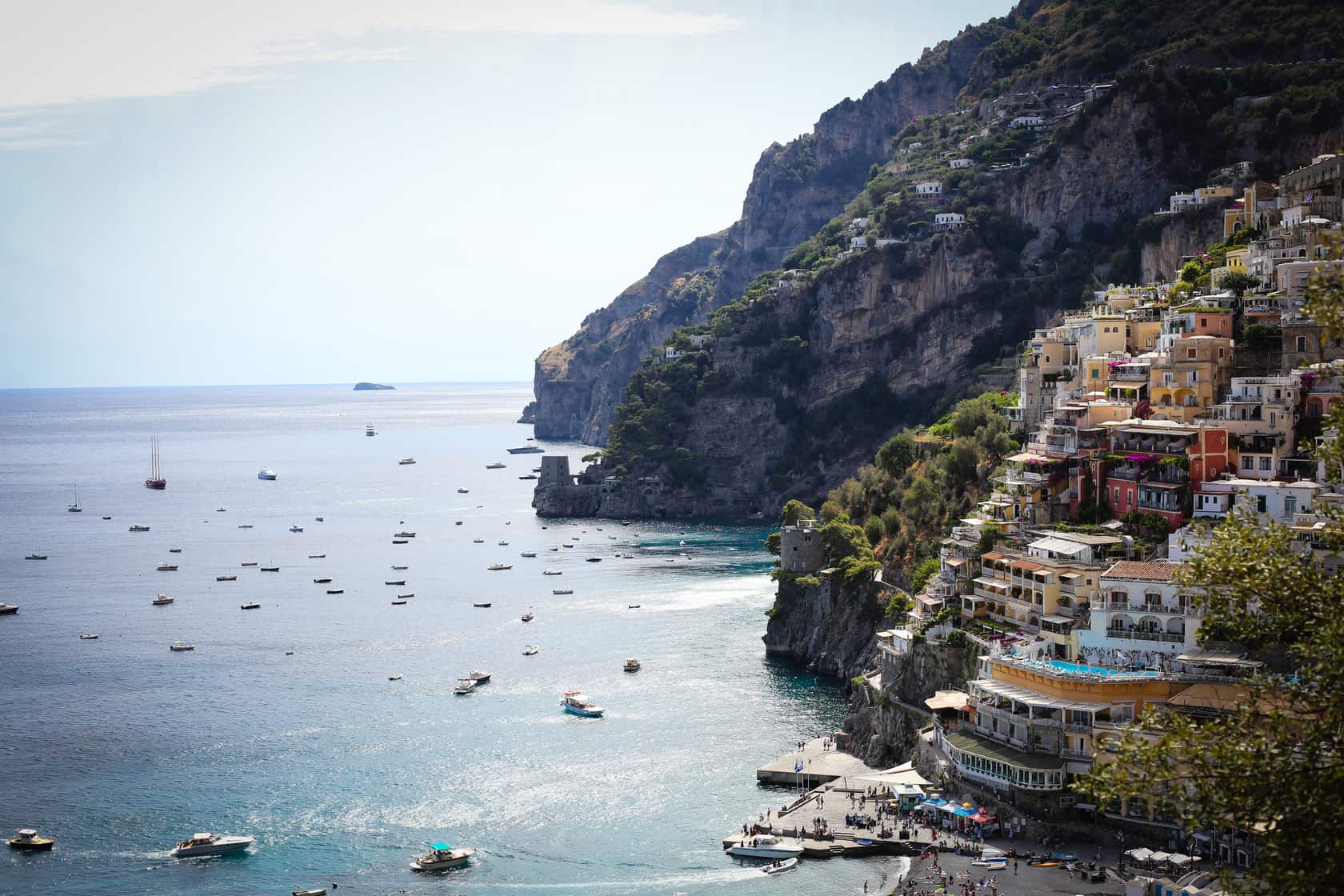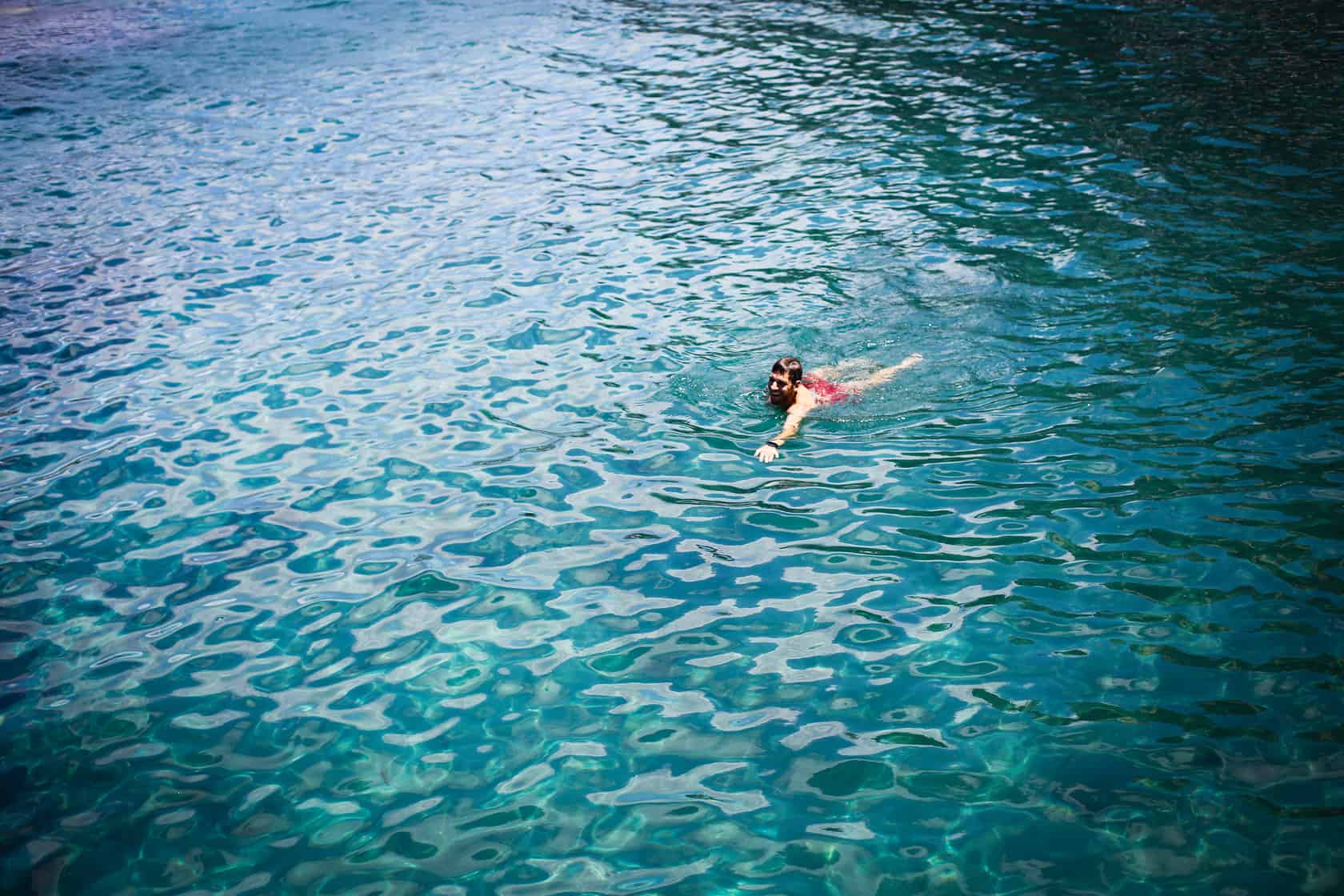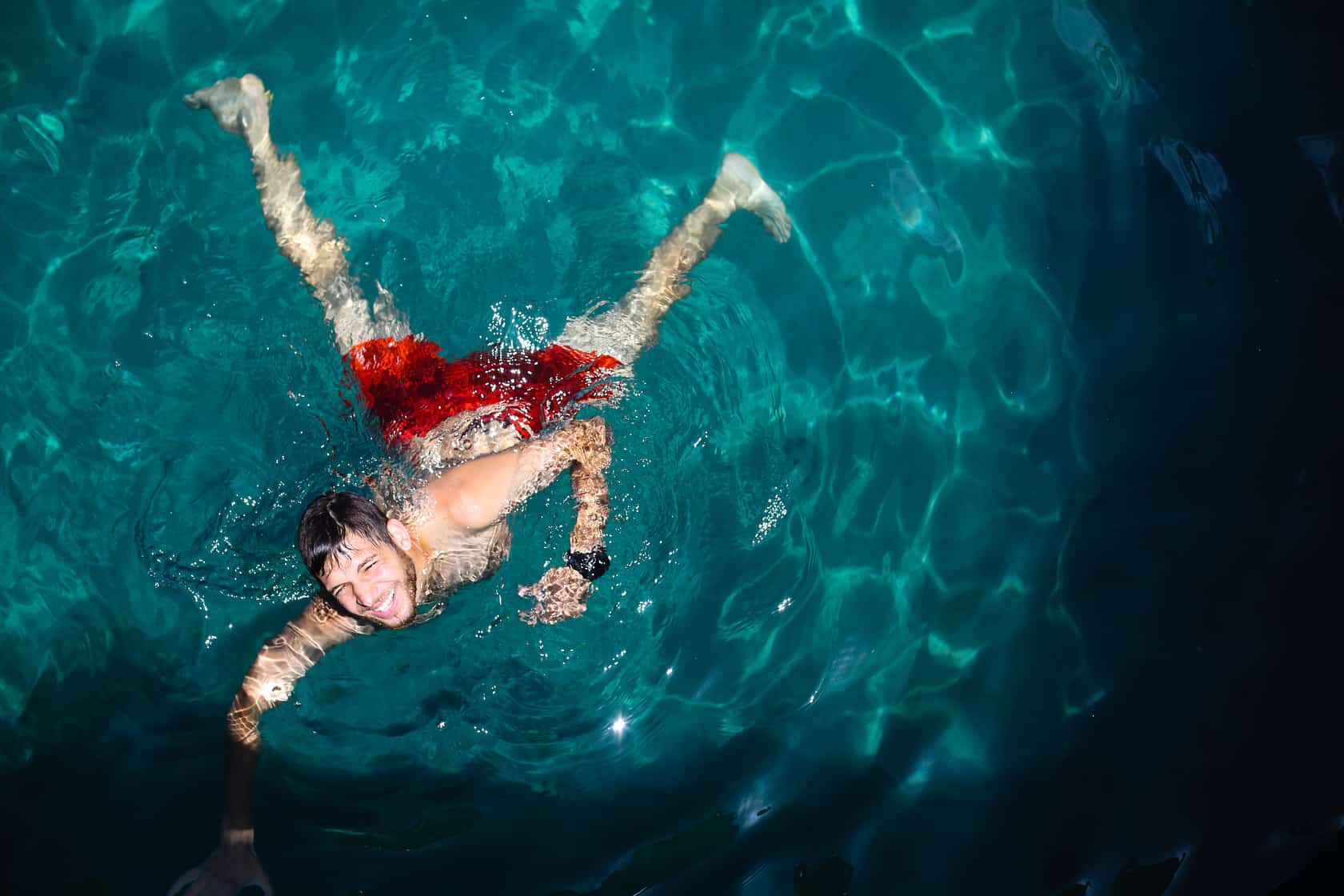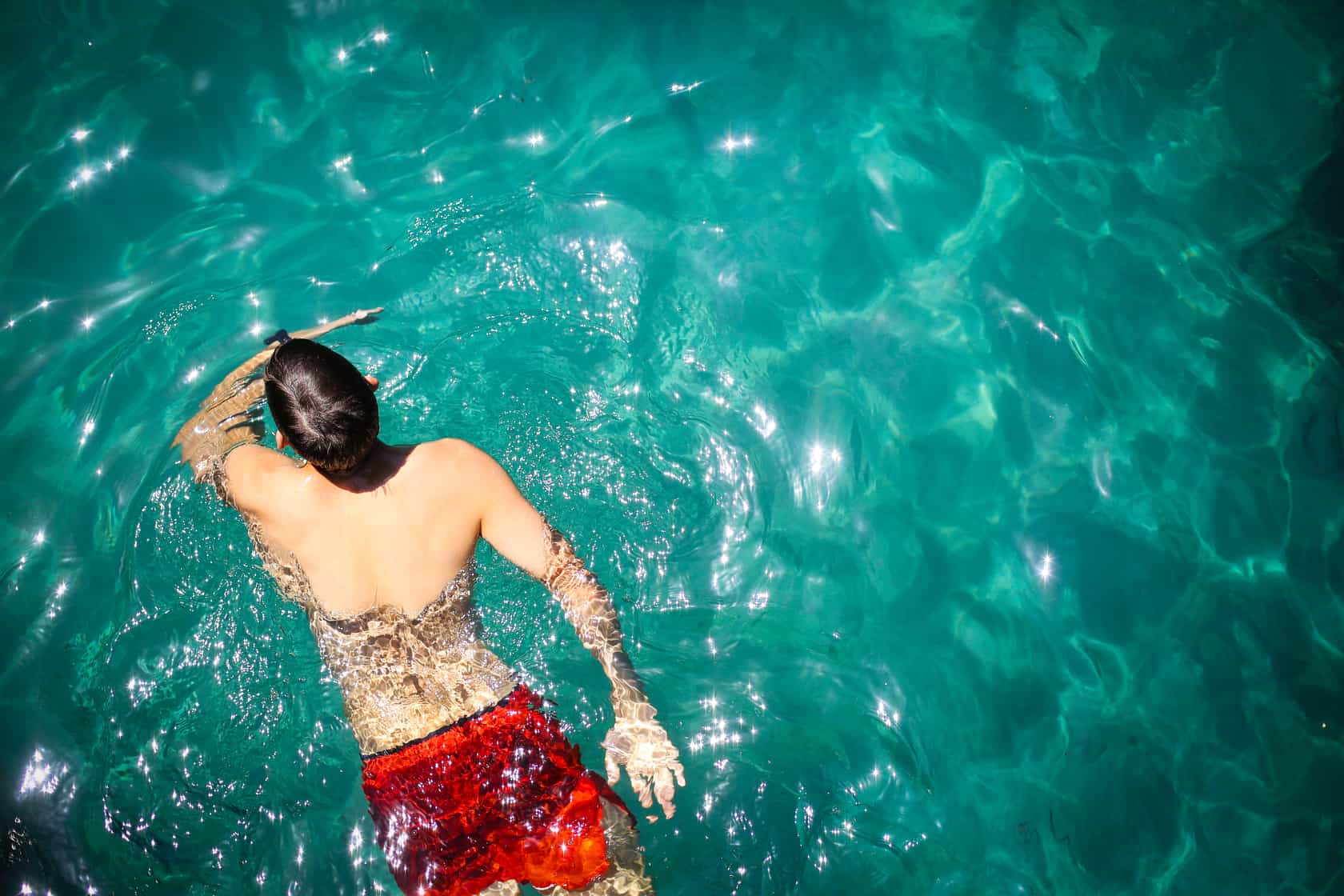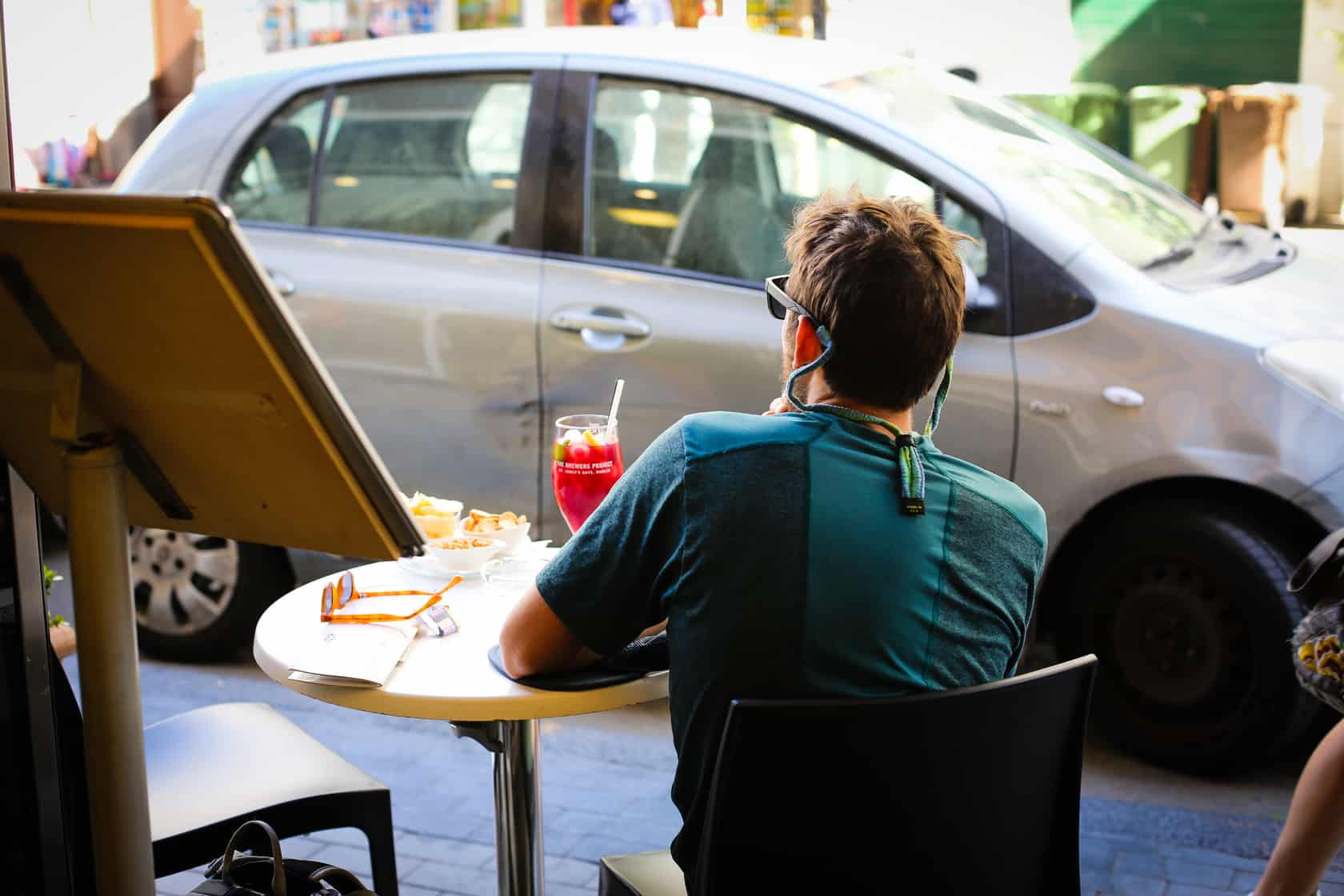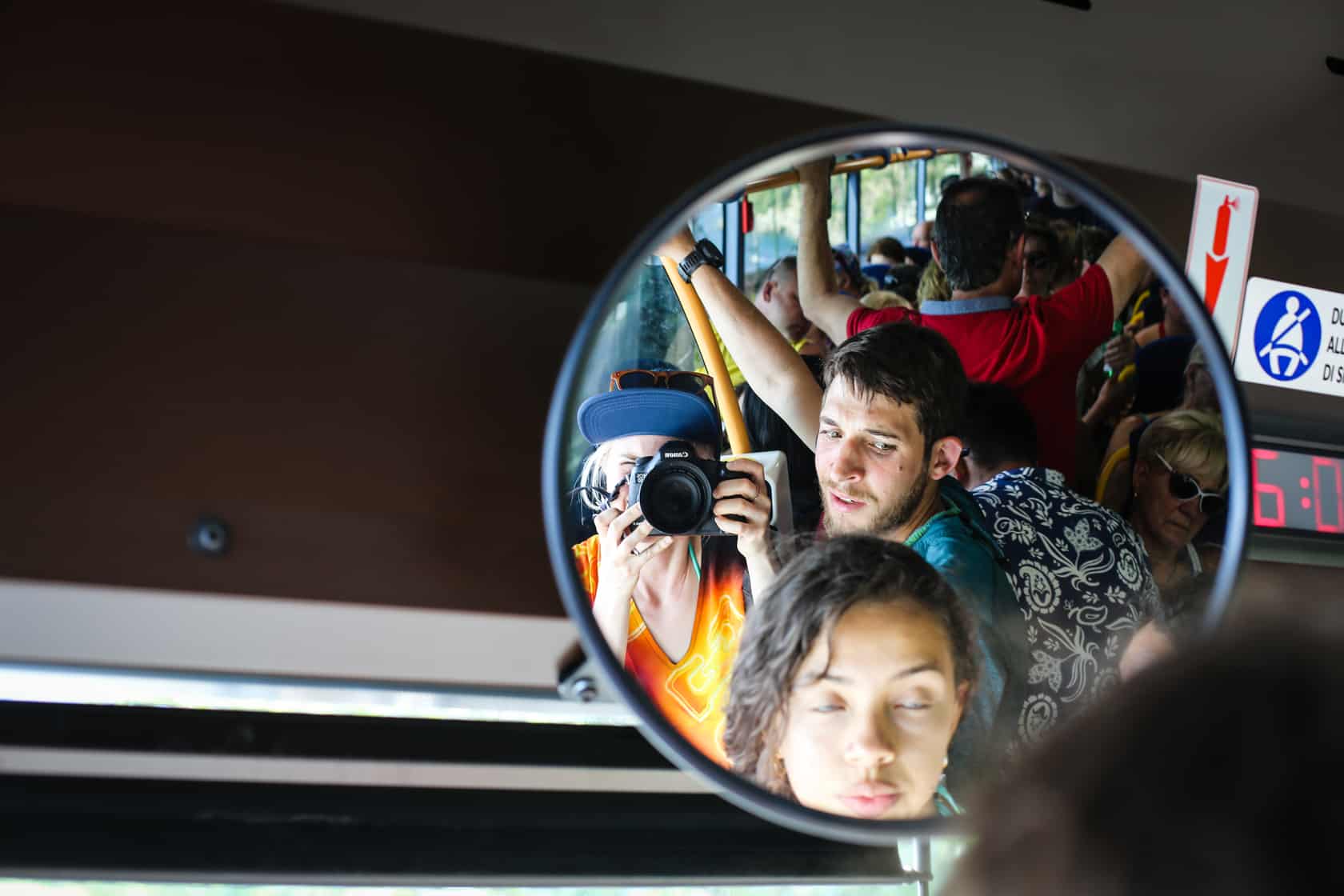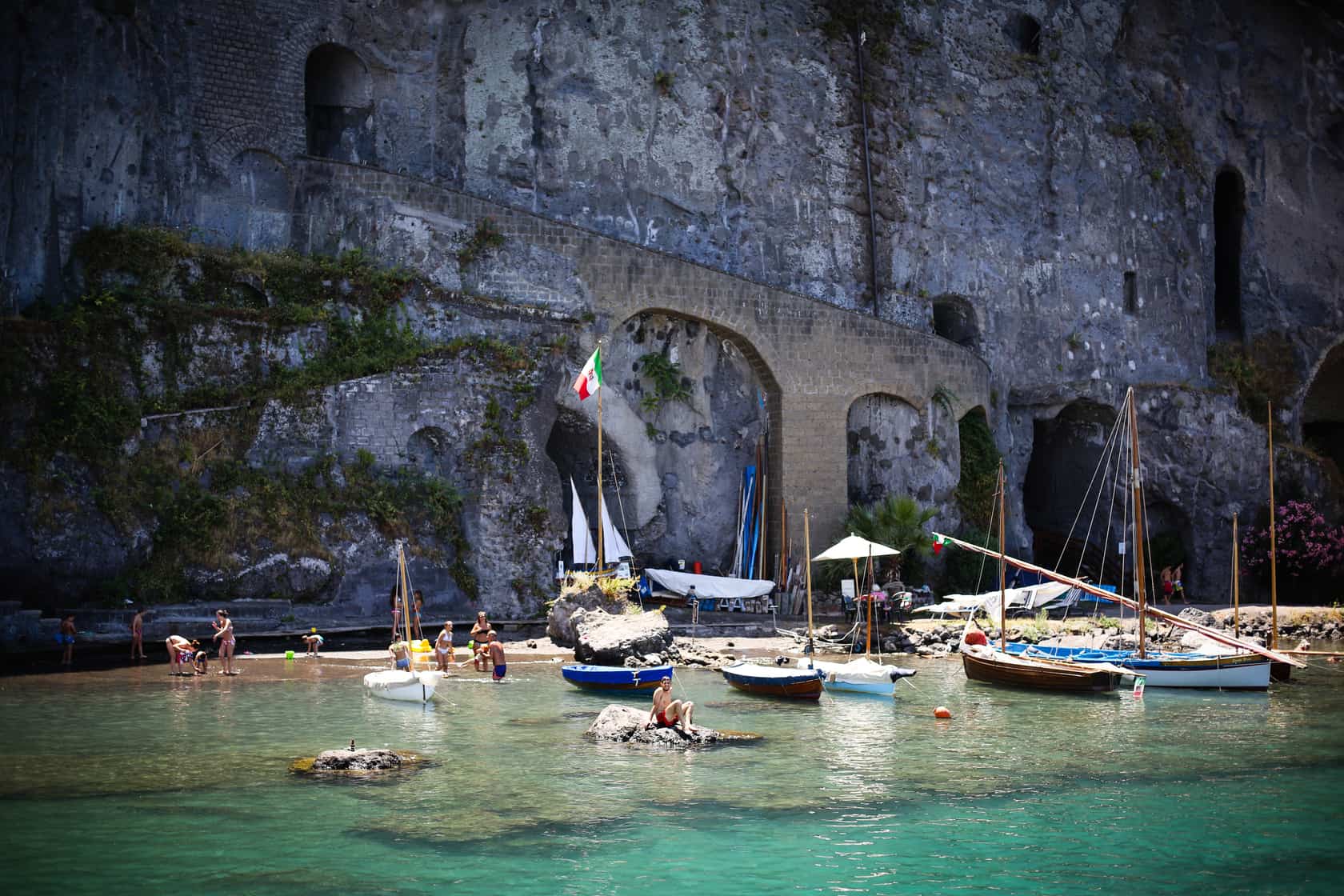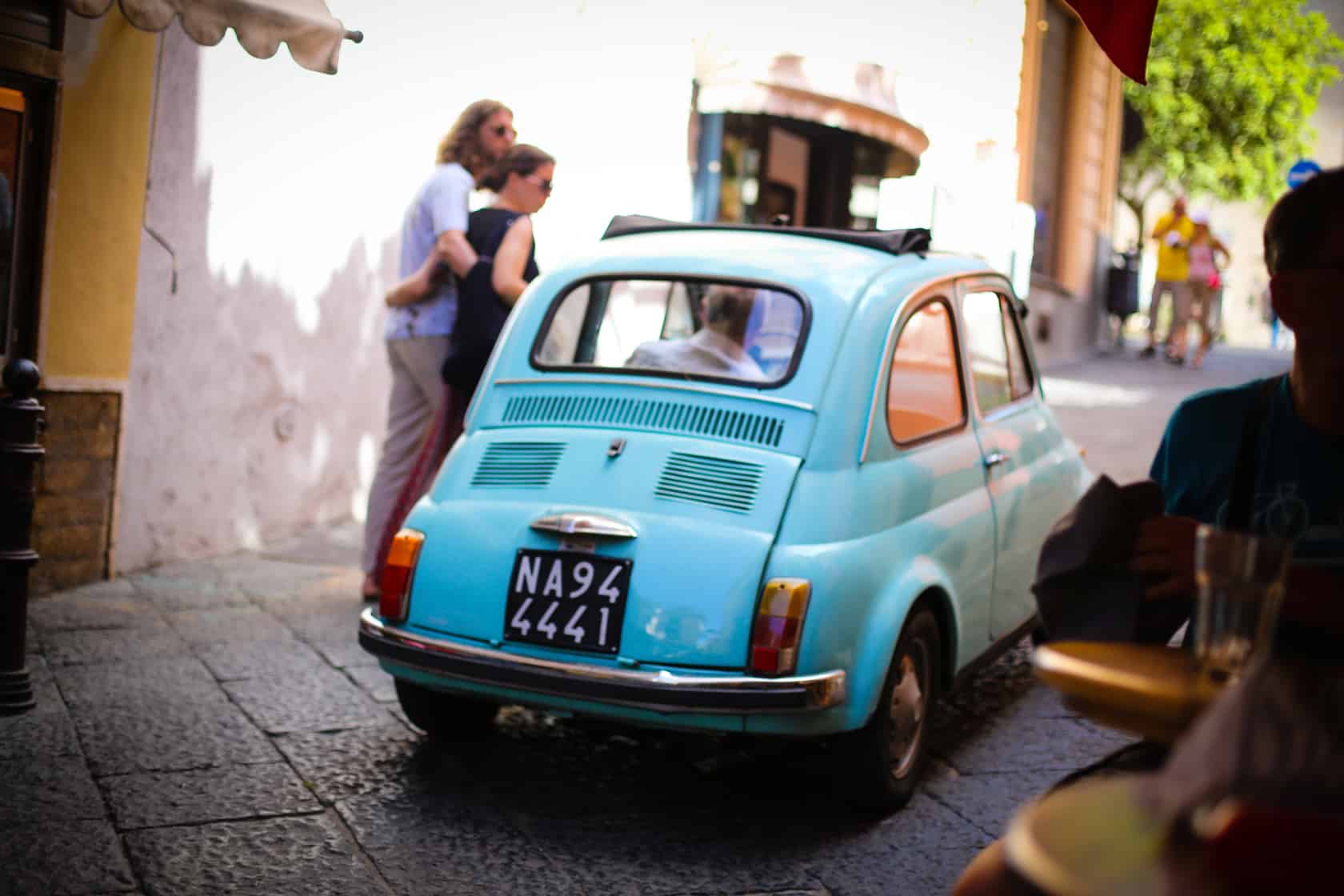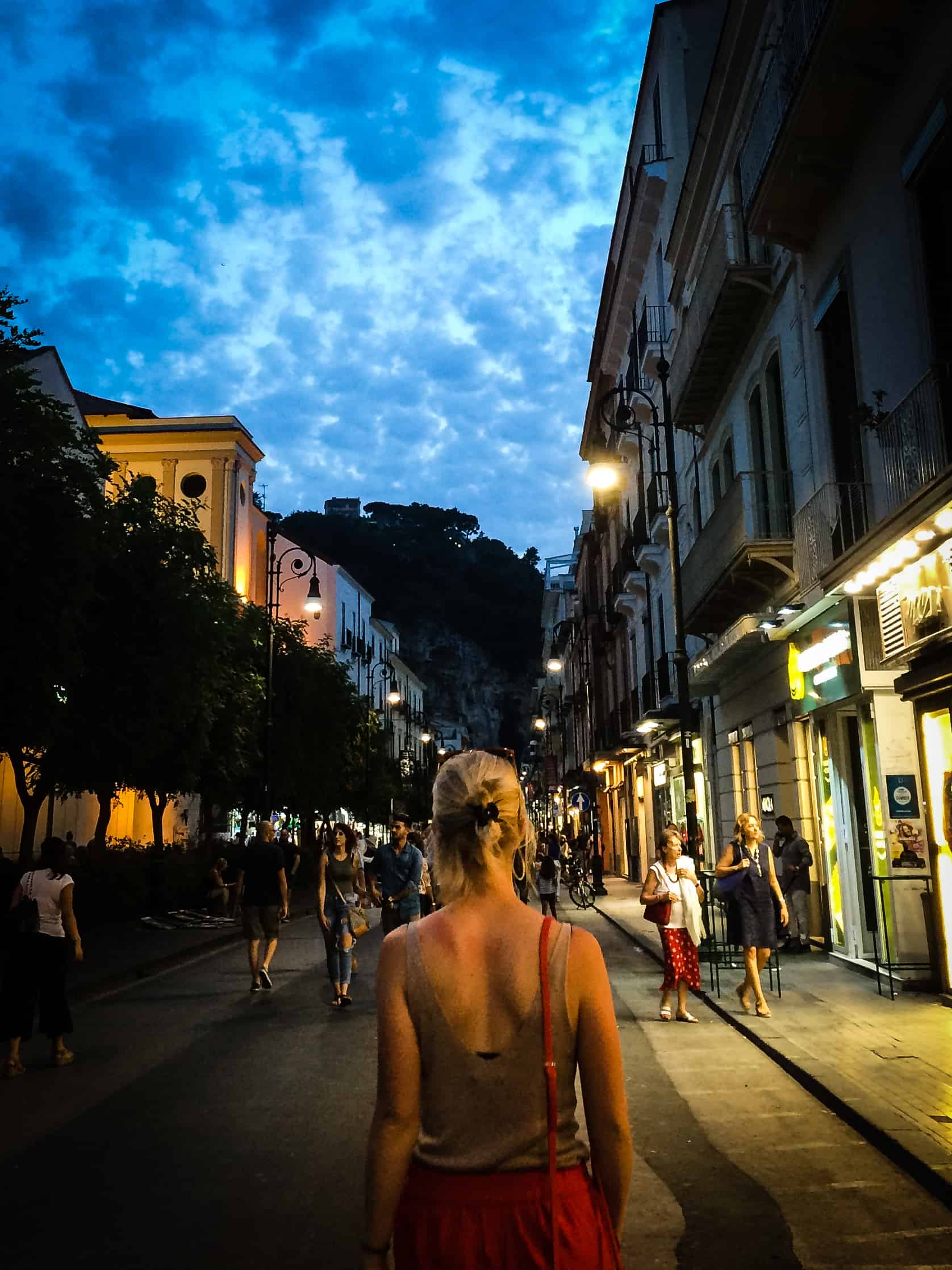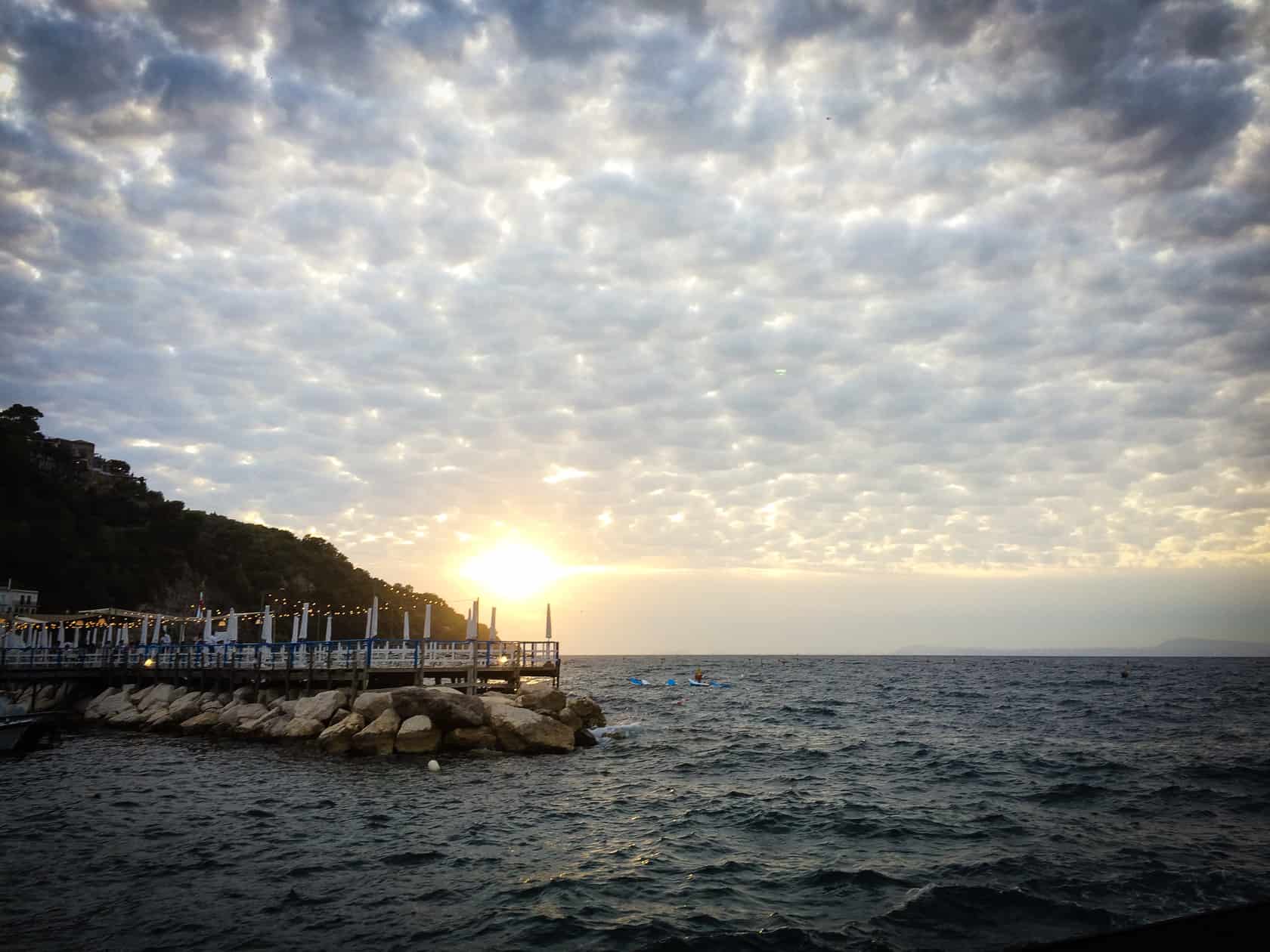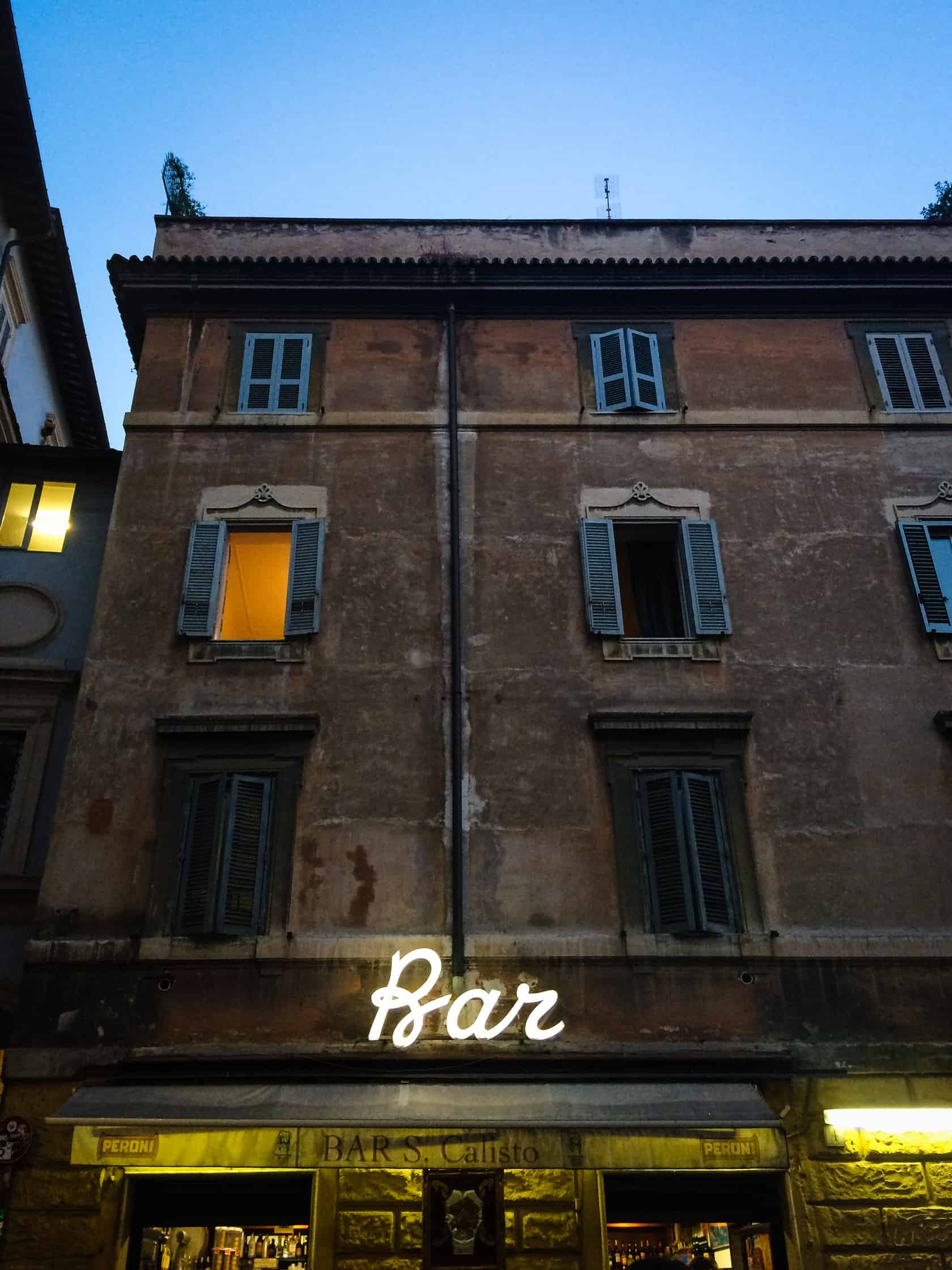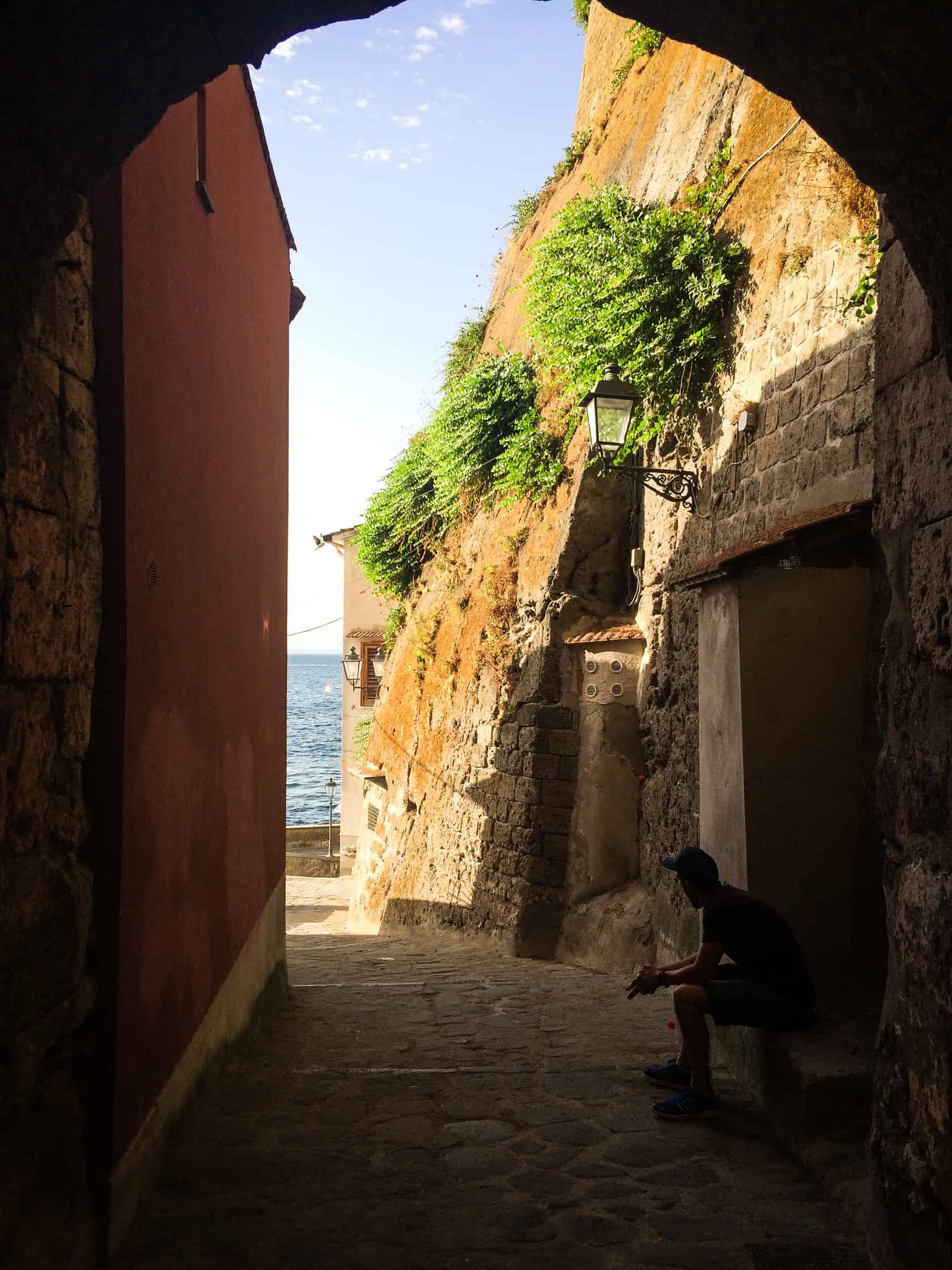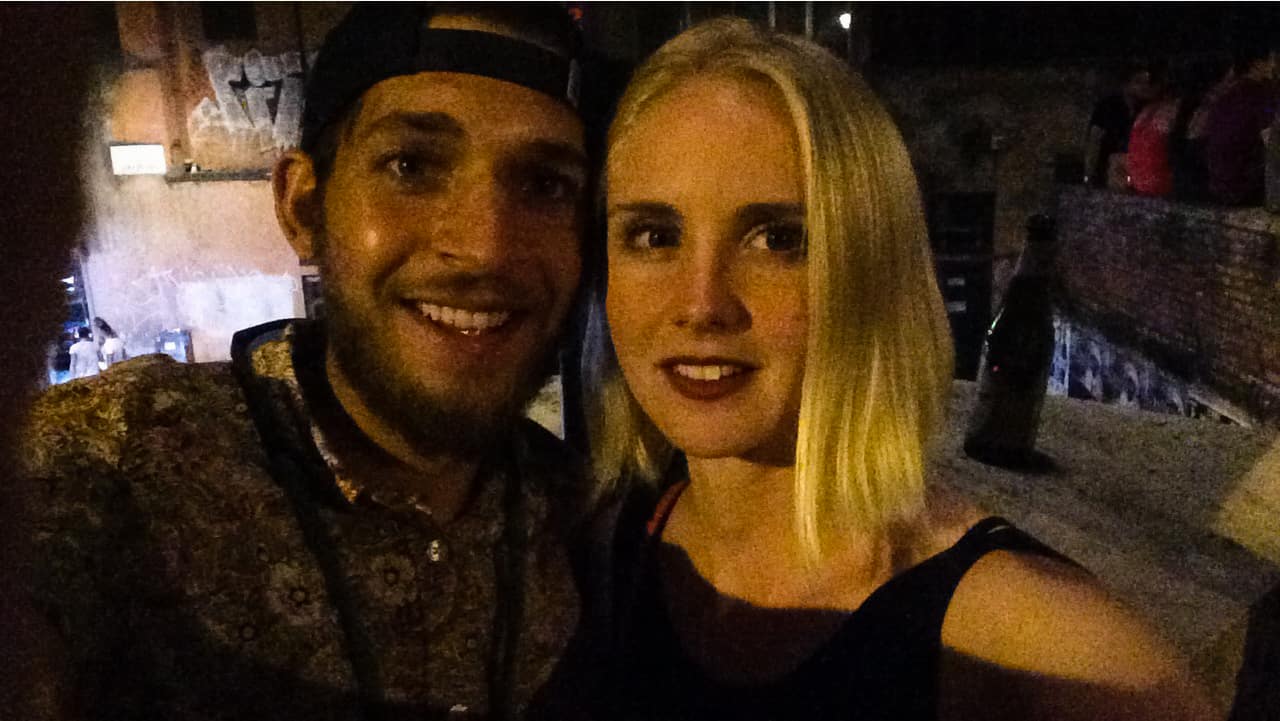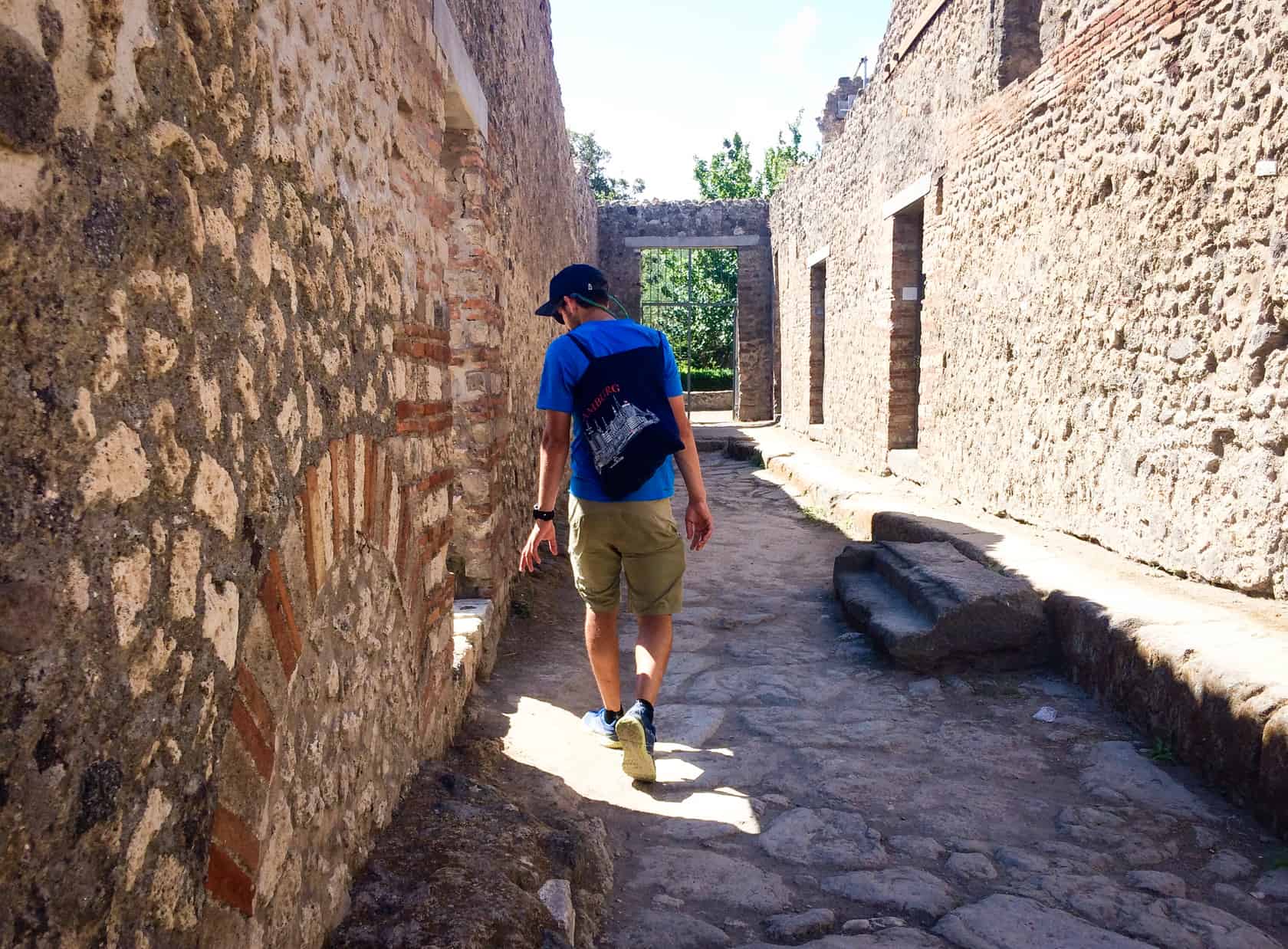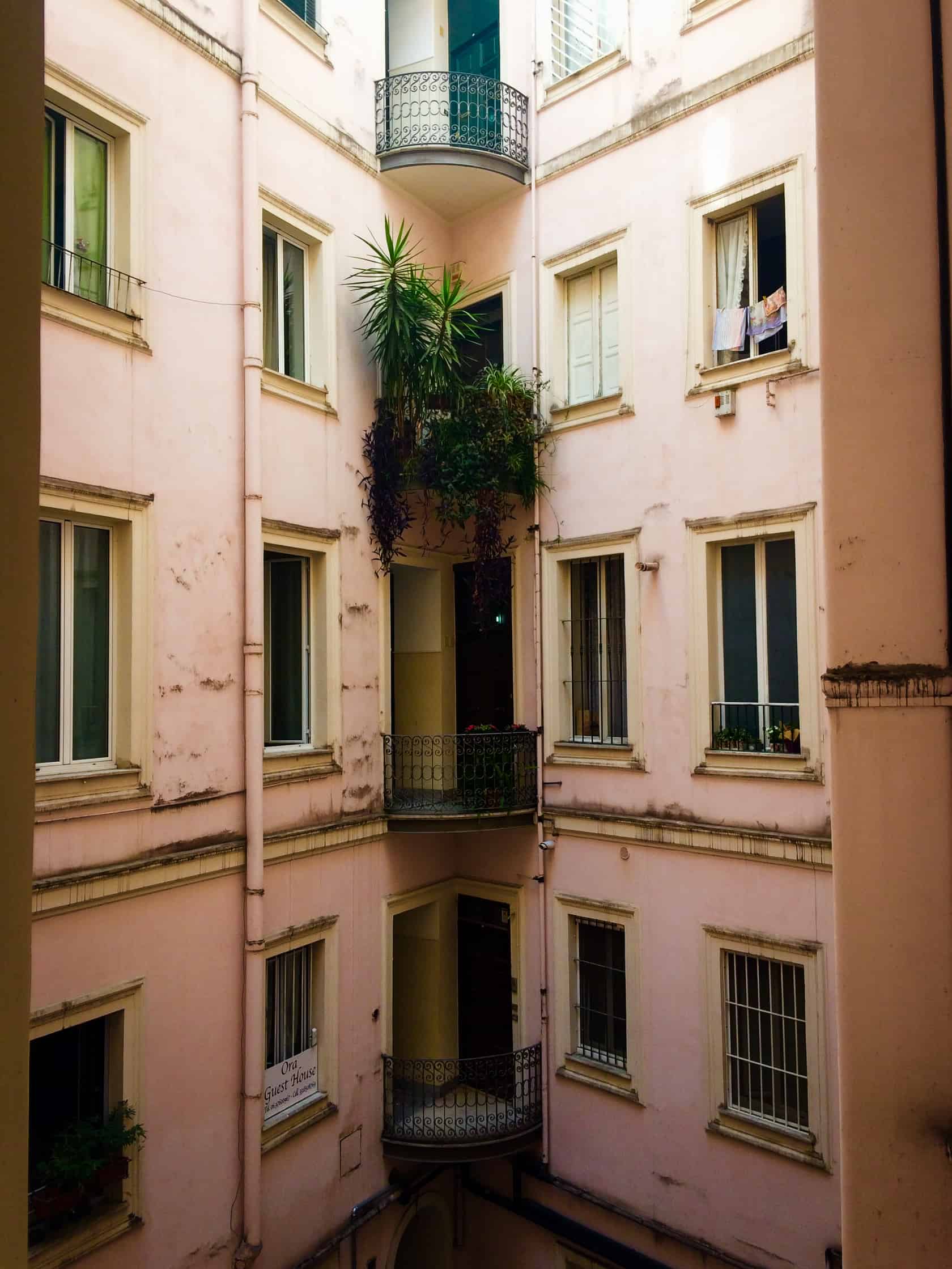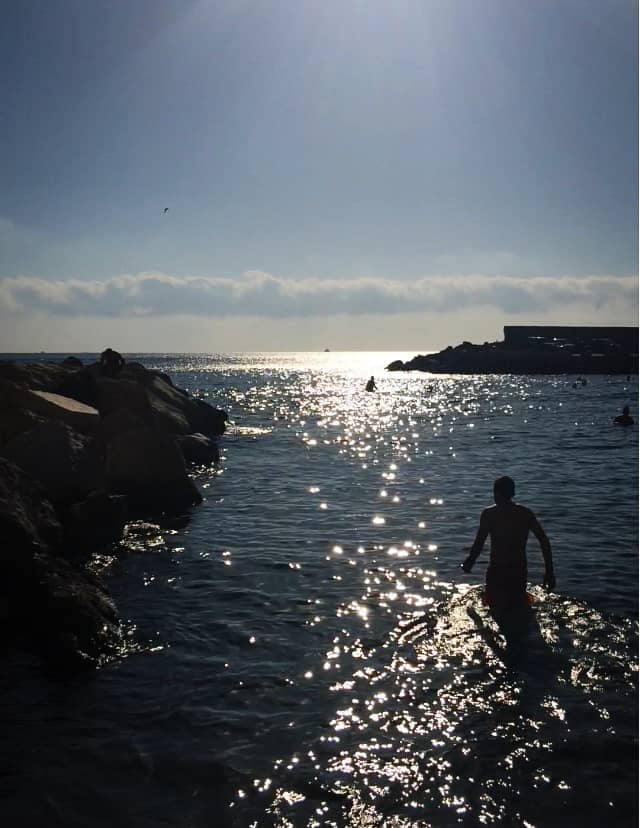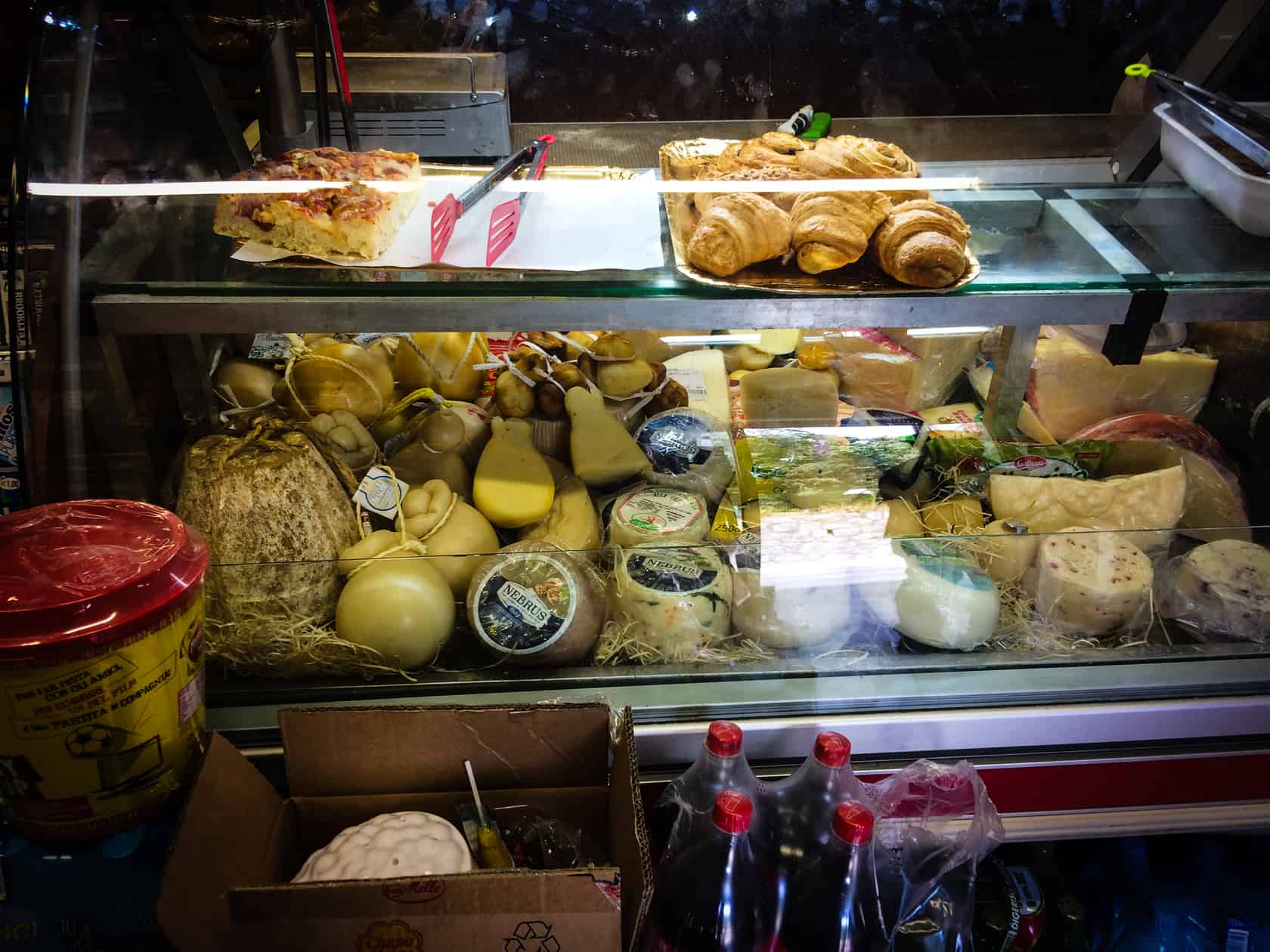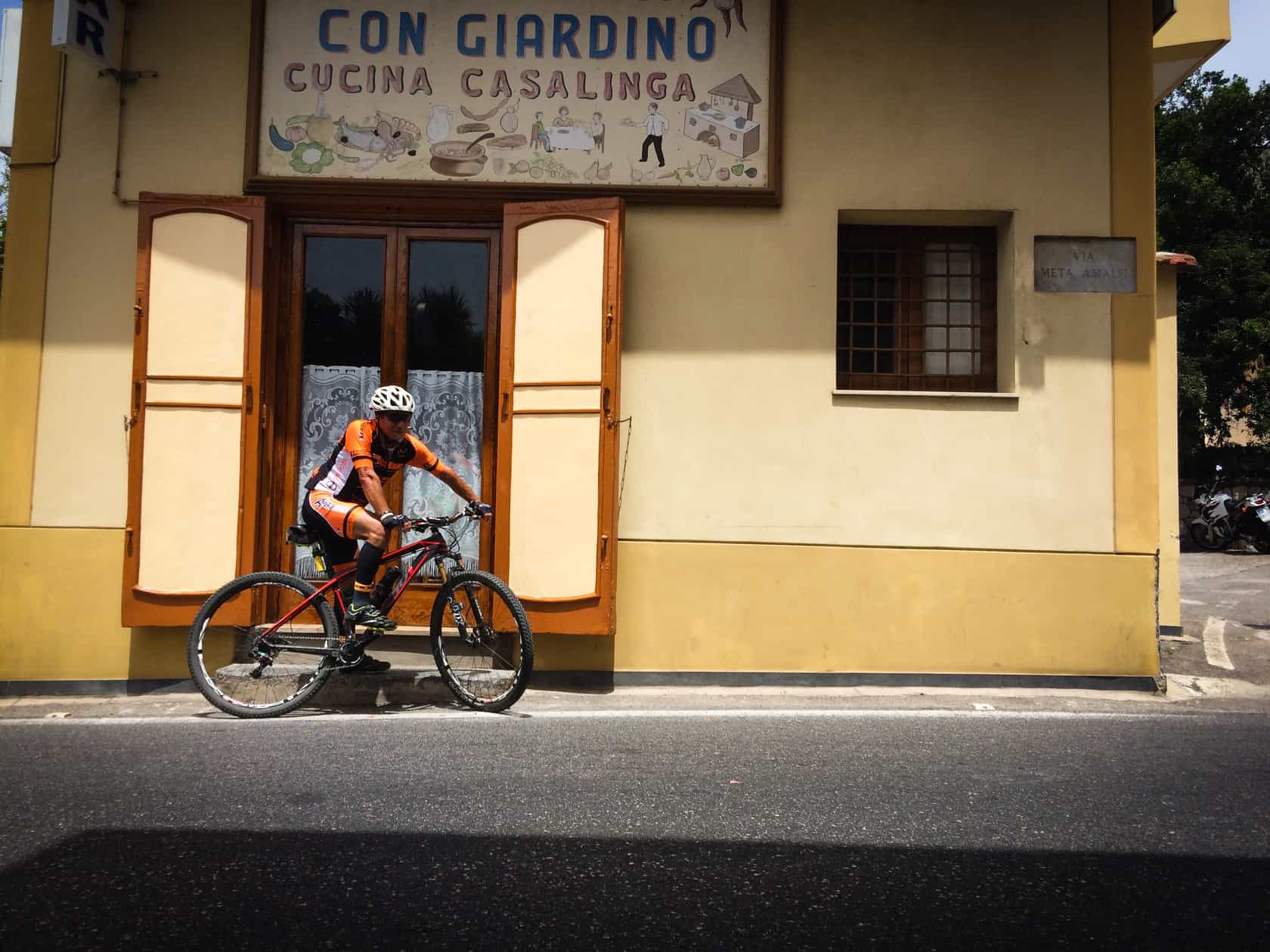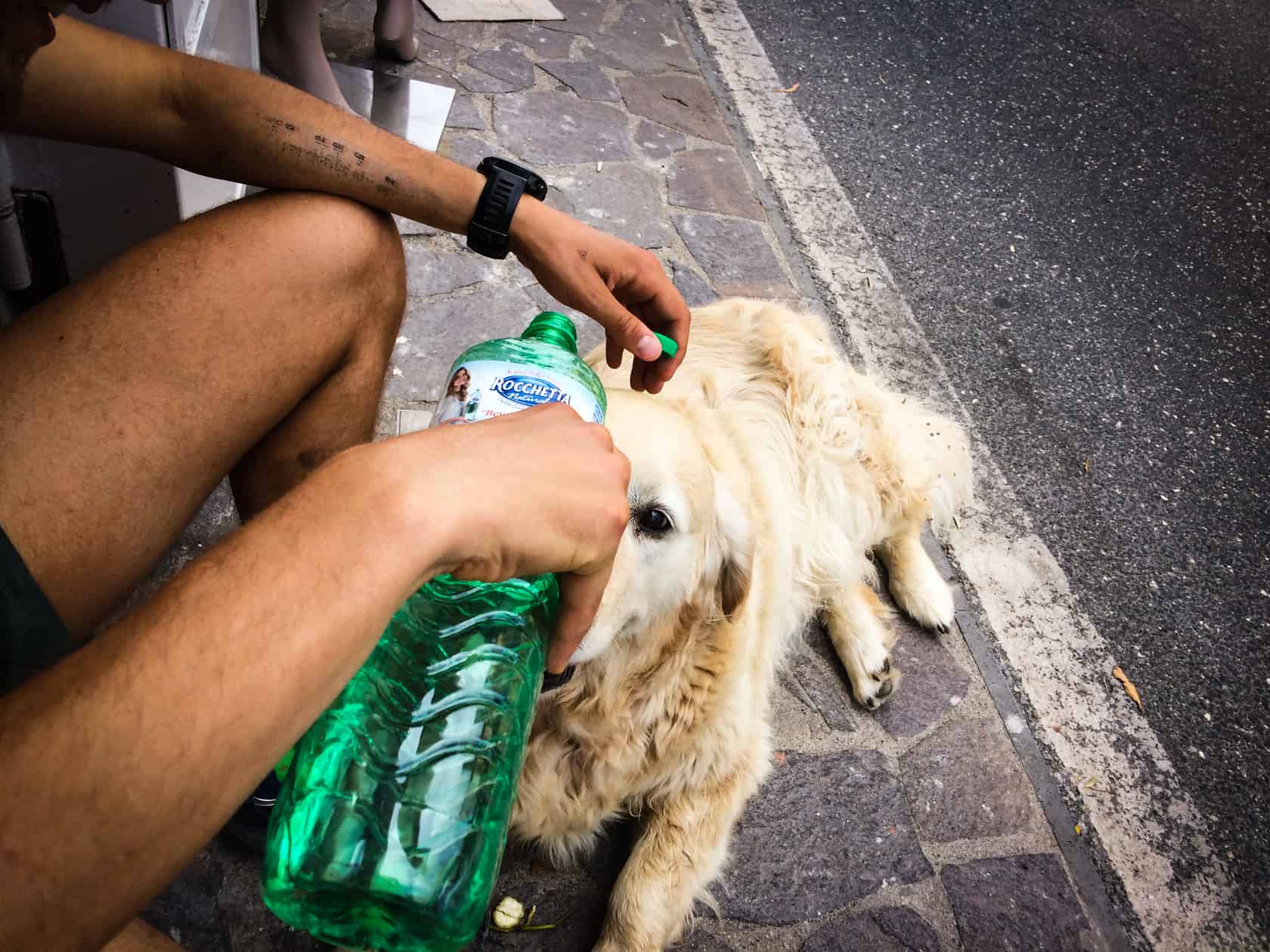"we got to know the Sorrento Peninsula with our feet."
The Sorrento Peninsula in the south of Italy is located just south of Naples, on the west coast of the Italian boot. Moisés Jiménez and I spent ten days during (what felt like) the hottest weeks of June and July exploring the peninsula and its villages. The idea was to unplug a bit after a year of racing and working, but to spend as much of our time moving as foot-powered as possible.
A bit of orientation: the Sorrento Peninsula is about 17 miles long, and is only about seven miles wide on average. However, the whole peninsula is a big, spiny ridge; it might be narrow, but if you want to see the other side, you’ve got to hike to the top of the ridge in the middle.
Some of the areas on the peninsula are known to be packed with tourists in the summer; a few of of the towns (Positano, for example, or Amalfi) are luxury vacation destinations. They were fun to see for a day, but we stayed in a fishing village on the peninsula’s east coast. (Thanks, Airbnb.) The village is called Meta.
All in all, we got to know the Sorrento Peninsula with our feet. It was thanks to our feet that we got to feel and see and breathe the landscape. We had a hunt-list—a breakdown of things that we wanted to do, foods to try, etc.—and used our feet to make it happen.
Walking.
Walking, as the most natural form of getting around, became the base of most of our movement time.
We walked to find our food, to see the towns, and we walked to different beaches. We walked just to walk, we walked through historical sites, and we even walked to drink wine. (I don’t mean “we walked to a bar,” I mean “we bought a bottle of wine and went for a walk.” Cheap version, mwuaha.)
When I say that walking was the most “natural form of movement,” I do mean physically but I also mean logistically. Since this area has been settled for thousands of years, the streets are really just narrow, little alleys—which foot-traffic and motor traffic have to share.
In Meta, the village where we stayed, the streets are so narrow that you have to duck into doorways when cars—even Mini Coopers—want to pass. It’s hot, so most of the doorways’ doors are open. This—the ducking into open doorways each time a car/moped passes—gives you a funny split-second view into the lives of the people in town; sometimes you step into the back door of a bakery, and you see the chefs filling croissants with Nutella. Other times it’s someone’s garage, and maybe sometimes it’s the door to a church.
Thanks to walking, we checked off a few items on our hunt list. There are mini markets tucked into the stone city walls, and there was one with wickedly cheap vegetables. Red peppers, green onions, pineapple and watermelon. Local sparkling wine, shelved without a label, sealed with the only mark of identity: “bottled by Giuseppe.” The markets had it all. It was by walking through the streets of Meta that we found these markets, and thus found fresh pasta. Check. We bought and cooked this on more than one occasion, weaving together dinners full of rucola and buffalo mozzarella (which originates from this region) and grape tomatoes that pop when you bite them.
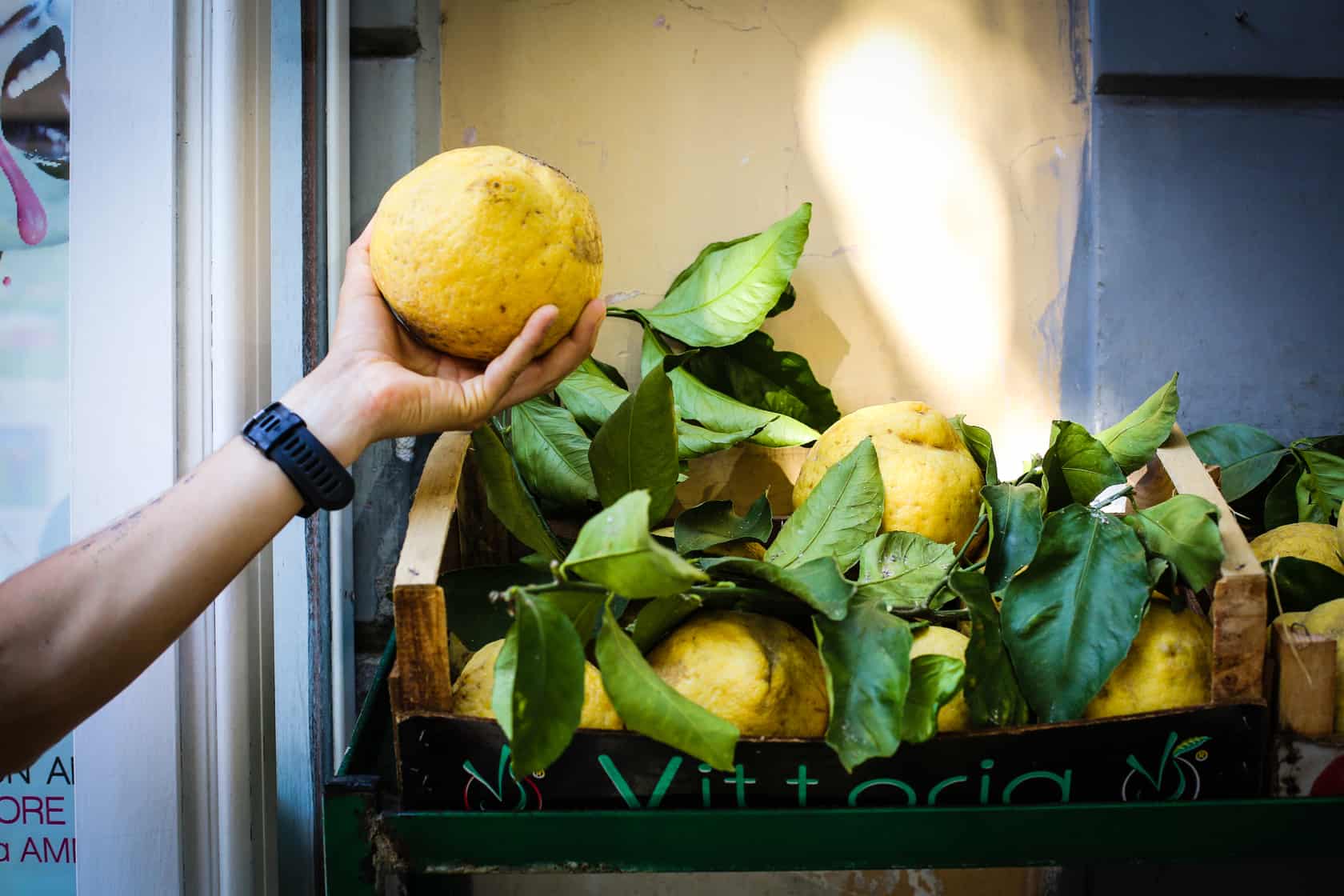
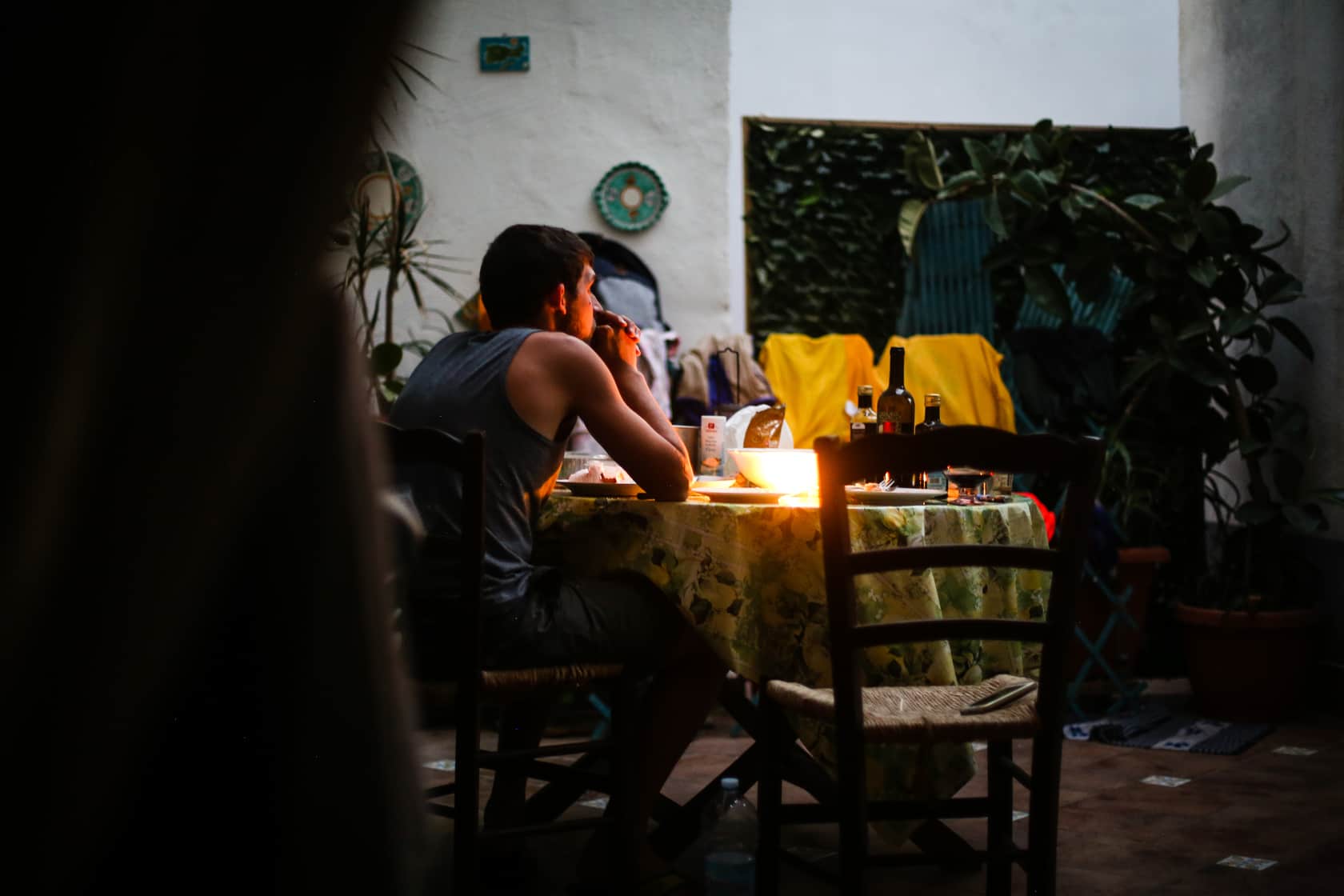
Aye, and another hunt-list-check-off: cannoli. Sadly, I failed to take a photo of the cannoli in my haste to eat, so here’s a quick description. Cannoli are native to the Sicily region of Italy, and are made with a fried dough, rolled into a tube shape. After they’re fried, the tubes are filled with a cream made from Ricotta cheese. In the bakery in Meta where I found, ultimately, the best cannoli, the baker was super duper proud of his cannoli. The cannoli in his bakery were different—everywhere, the cannoli are already filled with the cream, and you just choose which one you want. In this bakery, though, the shells were empty. The baker explained that the real, real way to serve cannoli—and how to know that you’re getting a good one—is to ask the customer which cream they’d like, and to fill the cannoli immediately before serving. He did this. I ate it. I did not take a photo.
Find and cook fresh pasta: check. Best cannoli: also check. Find a local wine: check. (Basically, check to all the food-related items.)
Running
Here, Moisés will take over to share about running-as-transport around the Sorrento Peninsula.
Moisés: For me, I run because it’s the best way to get to know an area. You don’t go too fast (like you would in a car or a bus,) and because it’s a challenge to orient yourself as to where you are. When you’re running, you can make a mental map of where you are.
I feel 100% more connected with a place when I run. If you’re in a place and you’re running, and you run there every day, you are not a visitor in the place. You become part of the place right away.
You know how when you’re living in a city or a place, wherever you live, and you see someone running? Your first thought isn’t “ah, that’s a tourist.” No, you usually think, “that person lives here, and is out for their morning jog before work.” Right? So, when I run somewhere, I feel like I’m from there.
On running in Meta, Italy:
I from Meta, the little local town where we were staying. It’s not that apt for tourism, so it’s more real in a lot of ways.
I always tried to use the roads to connect to the trails…and to try to understand how to run in that area (when you’re not familiar with the trail system, you don’t know if the trails are high-quality or not, or if the trails even take you somewhere.) Everything is different in every country; so in the beginning, I use the streets to connect to the trails.
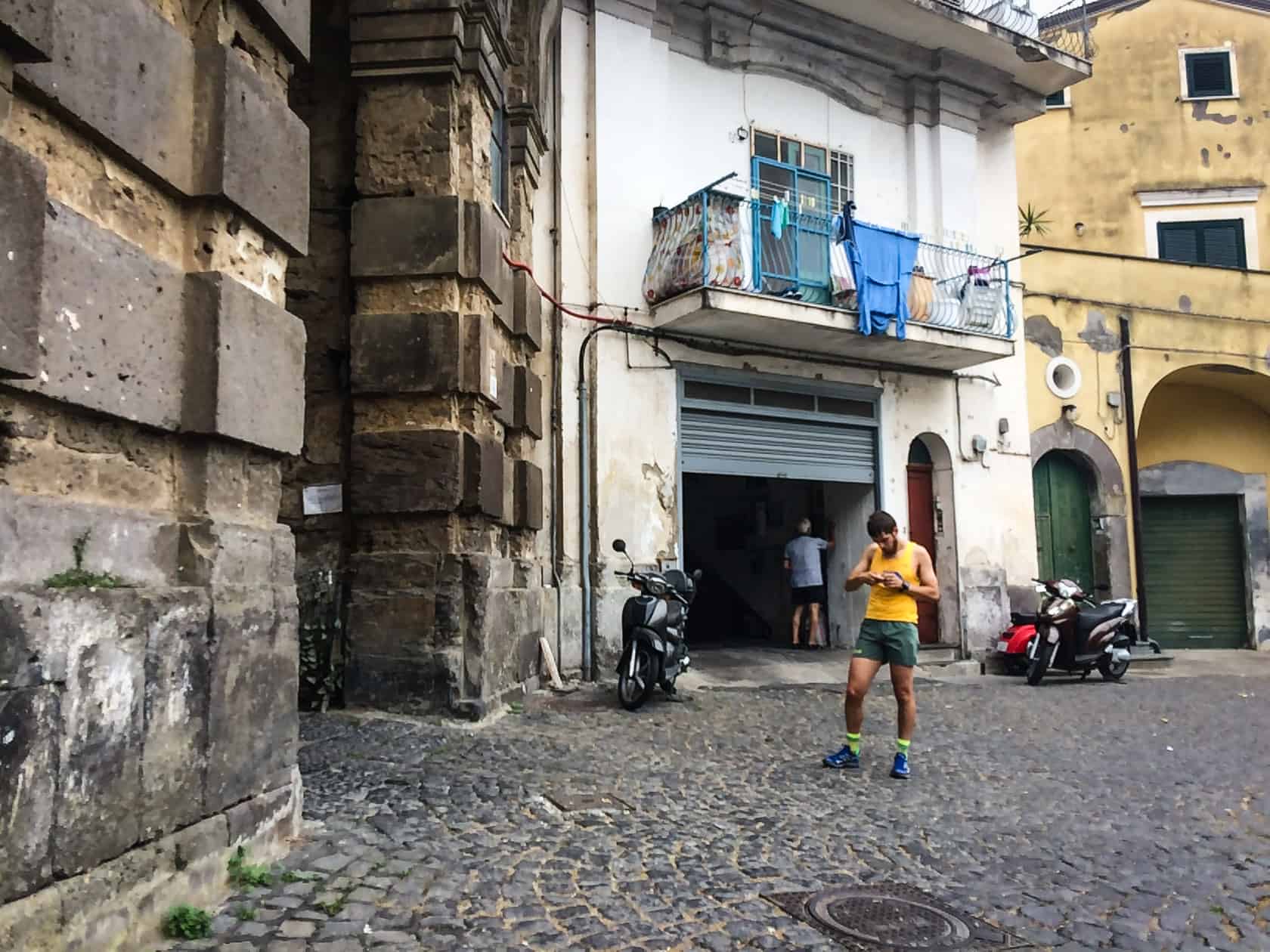
Around Meta, I found super ancient trails which probably haven’t been used in decades, and other trails in good conditions (closer to the touristic places.) In the beginning, you have to see where the locals have put the trails over time. After you find them, then you can find a rhythm.
So. It’s super hard to navigate in southern Italy, because the streets have no order—and because there are no sidewalks. That’s a huge challenge. It’s really not easy to run there; the streets are such a labyrinth, and they’re all on steep hills. Logistically, it’s not easy.
It’s also hard to orient yourself because there are no tall buildings or mountains around to use as a reference point. You can easily get lost on the tops of the mountains, but you can use the ocean to make sure that you’re always going in the same direction.
On discovering history by running:
One of the great things that helps you to connect with a place by running is that you can also get totally away from the tourist areas and explore, which is one of my biggest motivations.
You feel special trying to find places or things that give you an experience in a place that nobody else has had, because probably nobody else has run to those places or has had those views.
You can be running in Meta, and find a trail, and then realize that it connects to another town that you didn’t even know that it exists. (And probably, it’s a trail that people haven’t used in hundreds of years. The signs are so old, and the letters are hand-painted onto the metal.) Then in that town, you can take anther trail. You don’t know where it’s going to take you, you just know that it’s going to take you up.
And when you follow the trail, it takes you to the middle of a forrest and you can find a house that’s probably at least 600 years old. There’s probably so much history, and so many things around, that nobody even has an an idea that exist there. So in the end, you can always find surprises. That’s super stimulating.
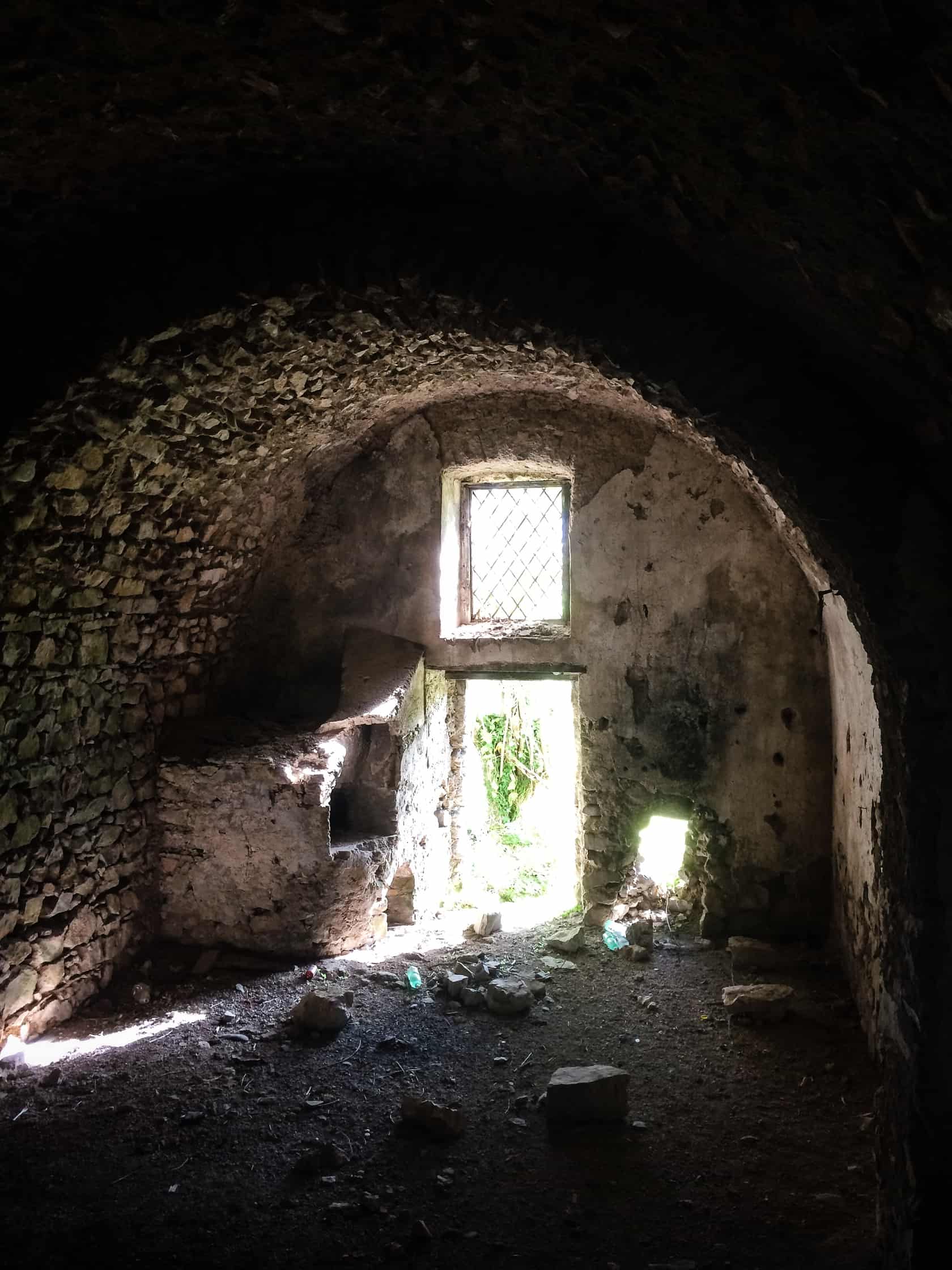
On running from Meta to Positano: Crossing the Sorrento Peninsula
There are so many towns on the Sorrento Peninsula that something cool to do is try to connect two towns by foot. The highways are dangerous, and the people don’t drive very well, so using the main roads for running is not an option.
So then you have the other option, which is to connect the towns through the mountains…which is a lot more fun…and is going to give you some great views.
So I found a way to download an offline map of the area to have an idea of how to connect Meta (a non-touristic town) to Positano (one of the most touristic towns in the area.)
And so one day, before everything got too hot, I started running from our Airbnb in Meta—planning to be swimming at the beach in Positano two hours later. So I started off, navigating on the narrow roads and quiet streets (everyone was still sleeping) until I found the trail which would take me to the first cross.
Okay, here’s a point worth explaining. The crosses. What people—at least in France and Italy—put on the top of the hills is a cross. That has two meanings; both that it’s one of the tallest points around, and also that there’s a trail that takes you there. This is a conclusion that I’ve drawn myself; I don’t know if it’s accurate, but it’s always worked for me.
So how I designed my route to Positano was by following the crosses. So from the quiet, narrow streets, you can see the cross. So I knew that that was in the direction of Positano; so I tried to find the trail that was going to take that cross. Once you make it to the cross, then you have a view of the next side of the peninsula. Then, you can plan your next movement.
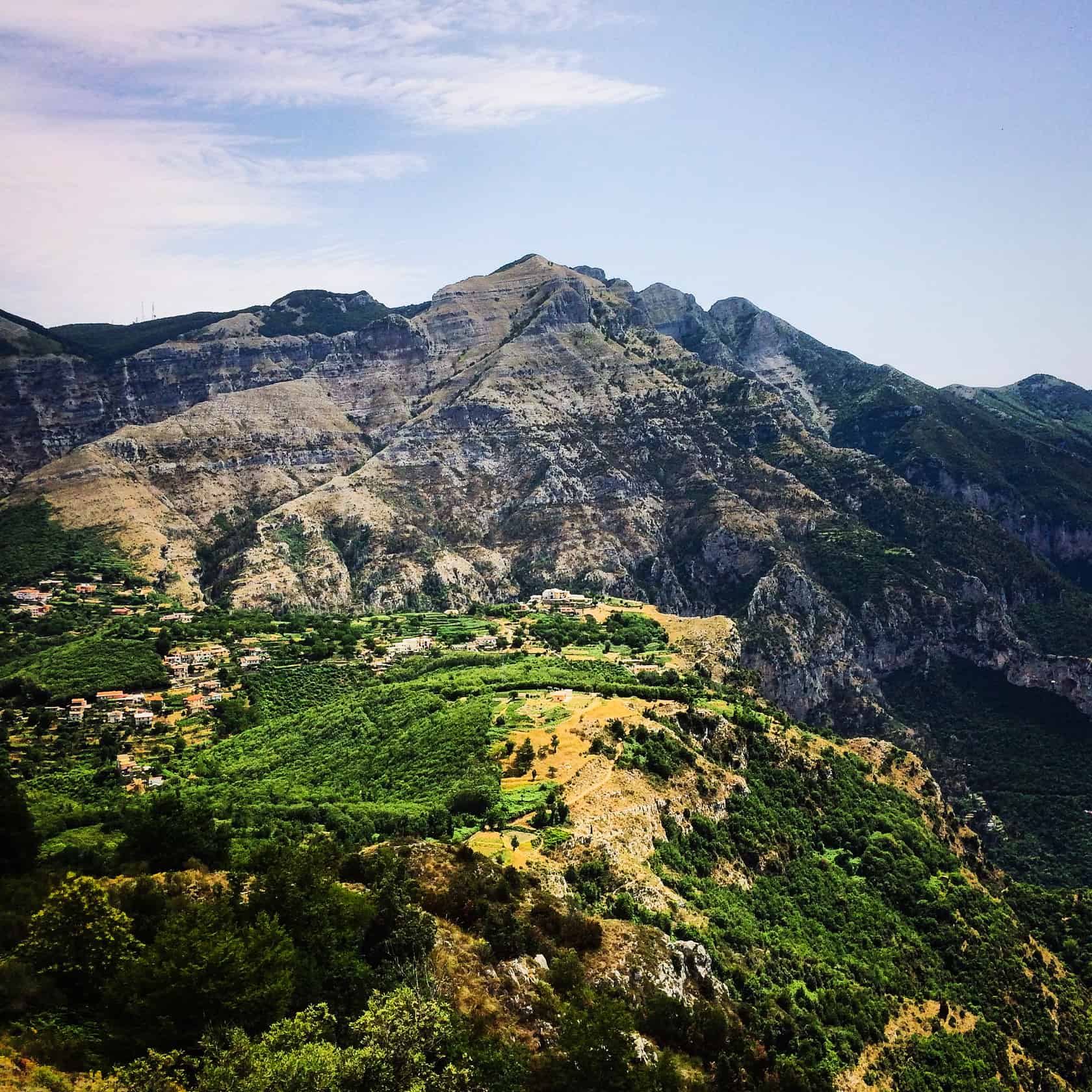
When you’re running a point-to-point route, there’s a limbo section in the middle of your run. You’ll have gone too far to turn back, but you’re still pretty far from the other side. In this case, this part of the route was the most wild, unmarked, off-road, densely vegetated section of the trail. Basically you couldn’t see your legs for a mile. You don’t really know what kind of plants there are, or if there are snakes, because you’re not from the area—so it’s interesting because it’s totally unknown.
Then I followed a cliff for a few miles, which gives you a great view of the ocean. Because I was running, I got good views of some private beaches that people usually can’t see…it’s funny to watch everybody on their yachts from a bird’s eye view.
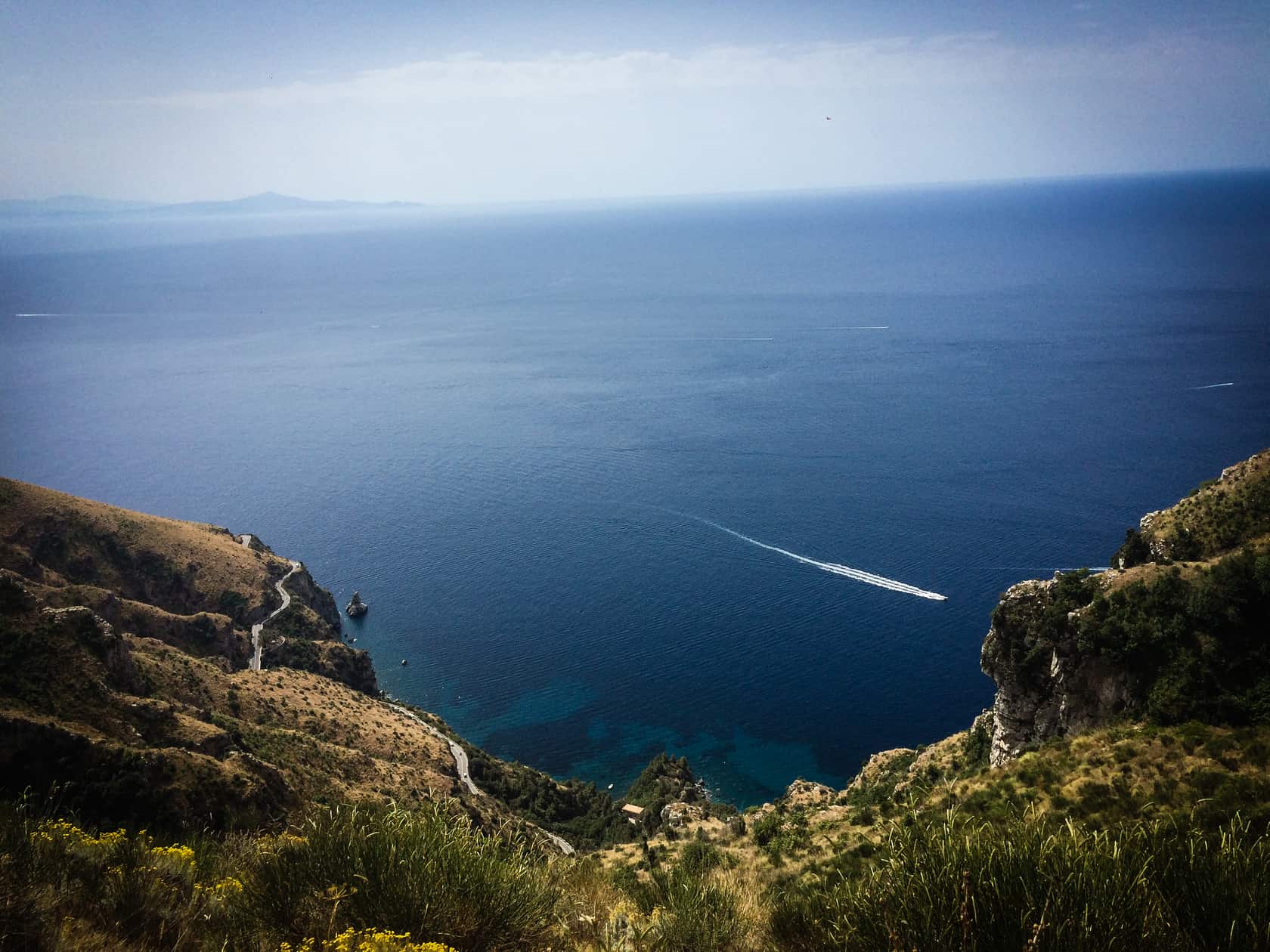
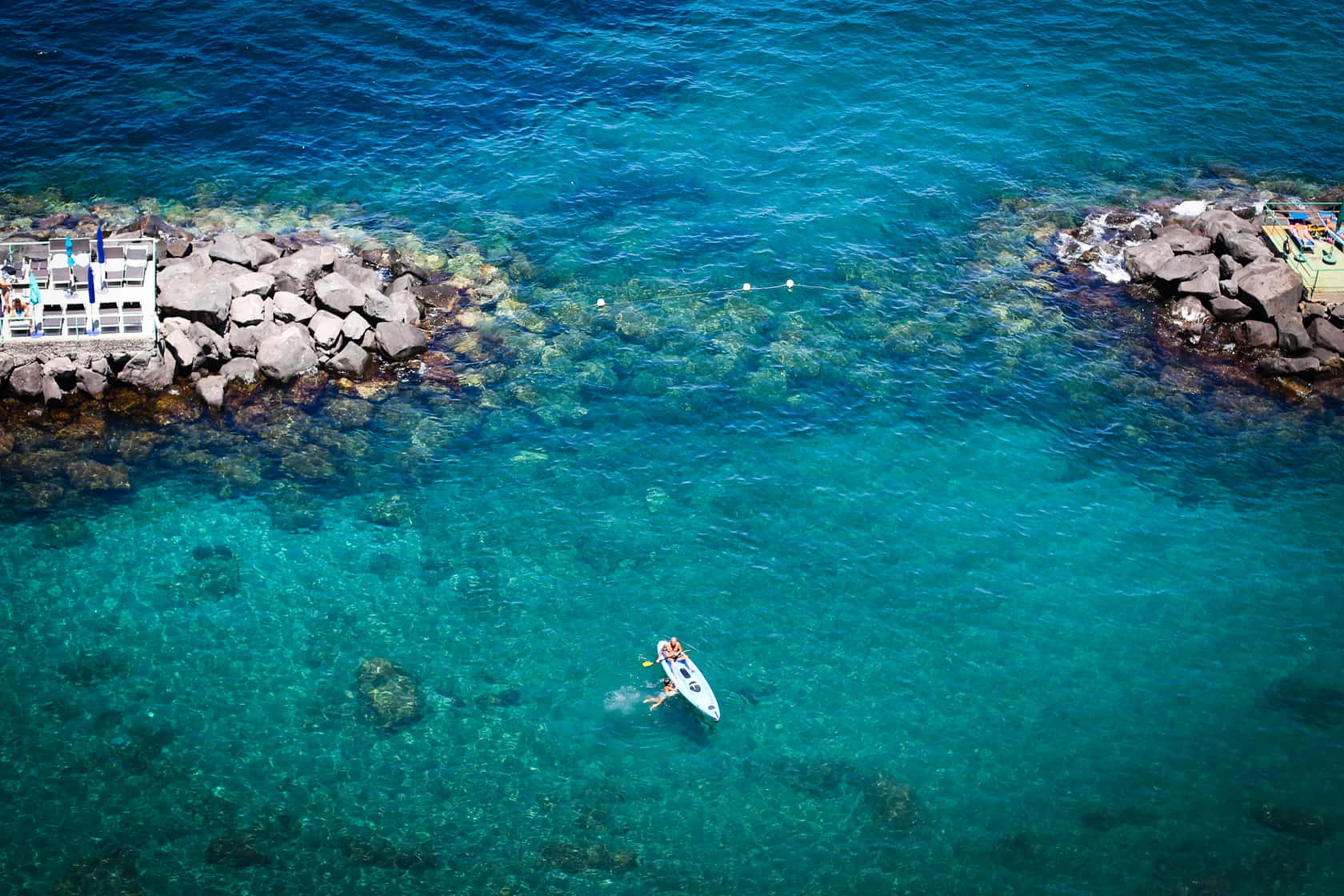
This cliff then brought me to the mountains on the Positano side of the peninsula. This was when I saw my first tourists of the day—in the last 1/3 of my run. Then, based on their advice, I figured out how to get down to Positano.
Afterwards, I took the downhill to Positano, which was a mix of trail and stone stairs. …really long. And the whole time you’re running down these stairs, you can see the town. You’re following this stone zig-zag and watching the town the whole time.
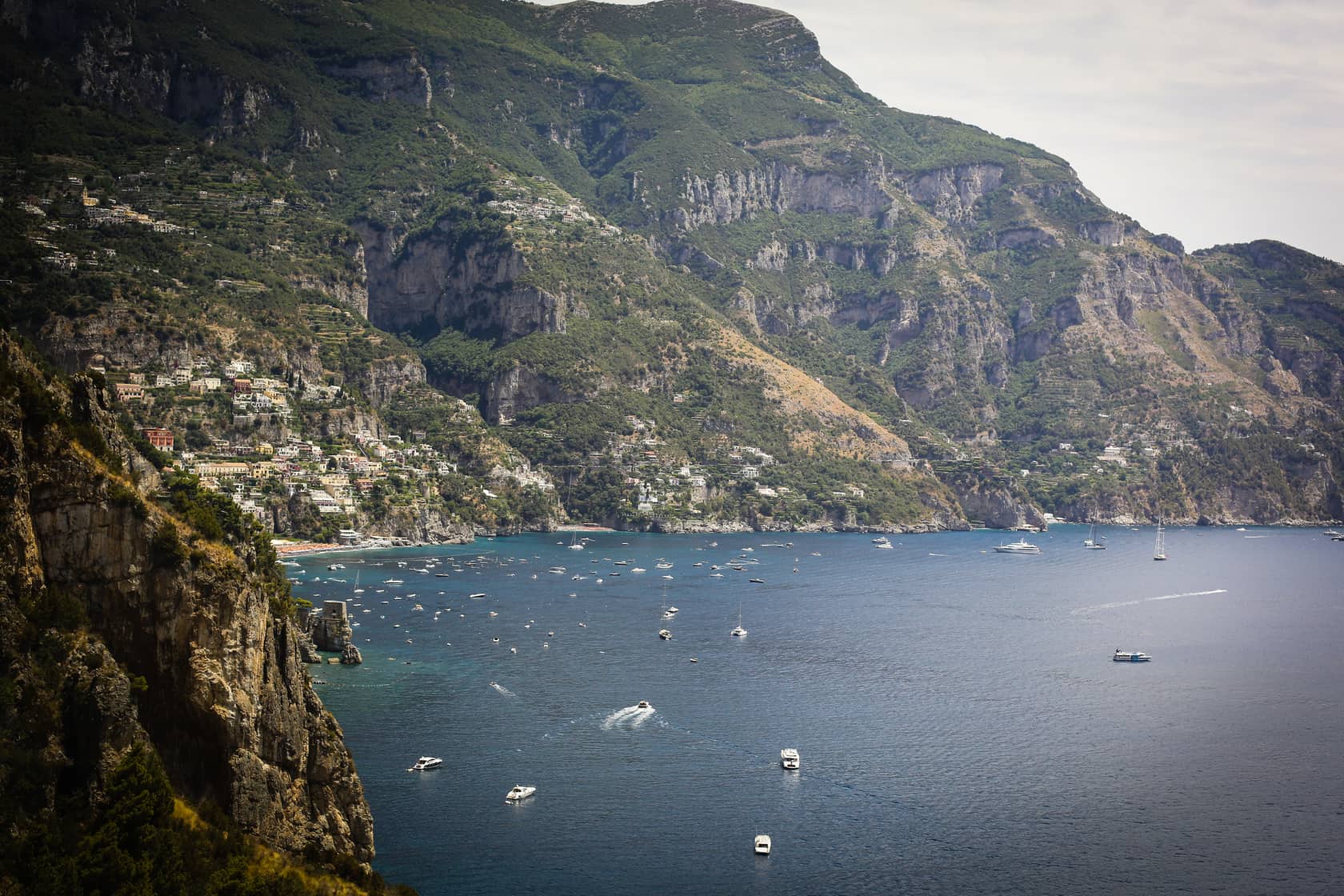
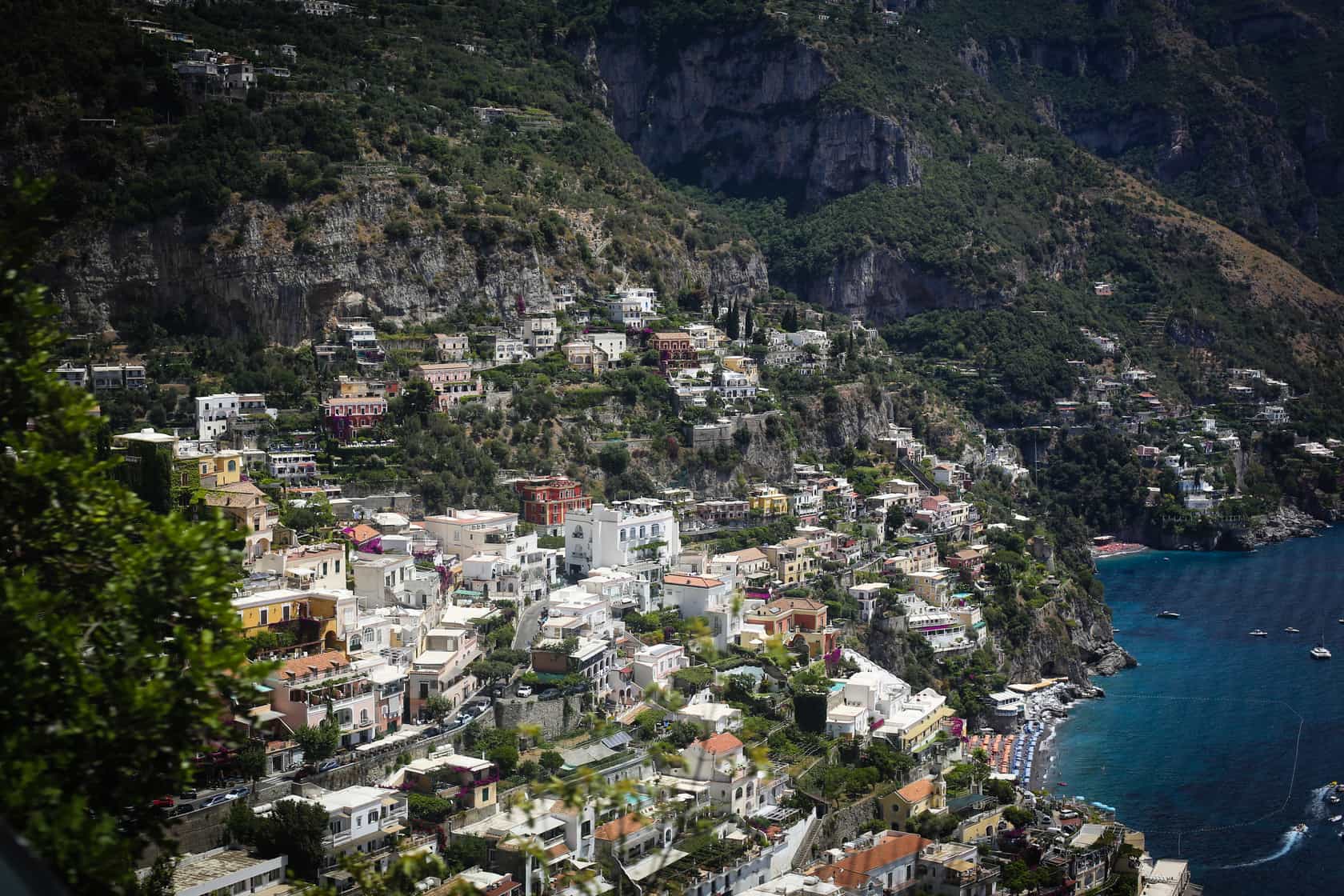
After that, you’re deposited straight into the downtown, into these tiny, steep streets, full of tourists eating ice cream and shopping. And wearing lots of fancy things. It’s kind of a contrast, really. It’s overwhelming, and you feel out of place. And dirty.
But mostly, you feel happy because these people are in their fancy towns, but you’ve really gotten to know the views, the areas, in this place where you’re staying. You get to know an area on a level that most people never get to.
And then, you get to end your run with the cold water of the Mediterranean that you’ve had in mind since the start.
Run across the Sorrento Peninsula: check. Also a check to: finding something historical that’s not in the guidebooks.
Swimming
The water is warm and salty in this part of the Mediterranean. (For some reason, it always sounds gross to me when water temperature is described as “bath water,” but in the end, that’s what it felt like.) We made it a point to head to the water at least once a day; this was easy from our place in Meta.
The beaches on the peninsula ran on a scale from local and low-key to fabulous and full; in the end, the favorite swimming spot of Moisés and I was our local beach in Meta…but in terms of people-watching, the beach in Positano definitely takes the cake.
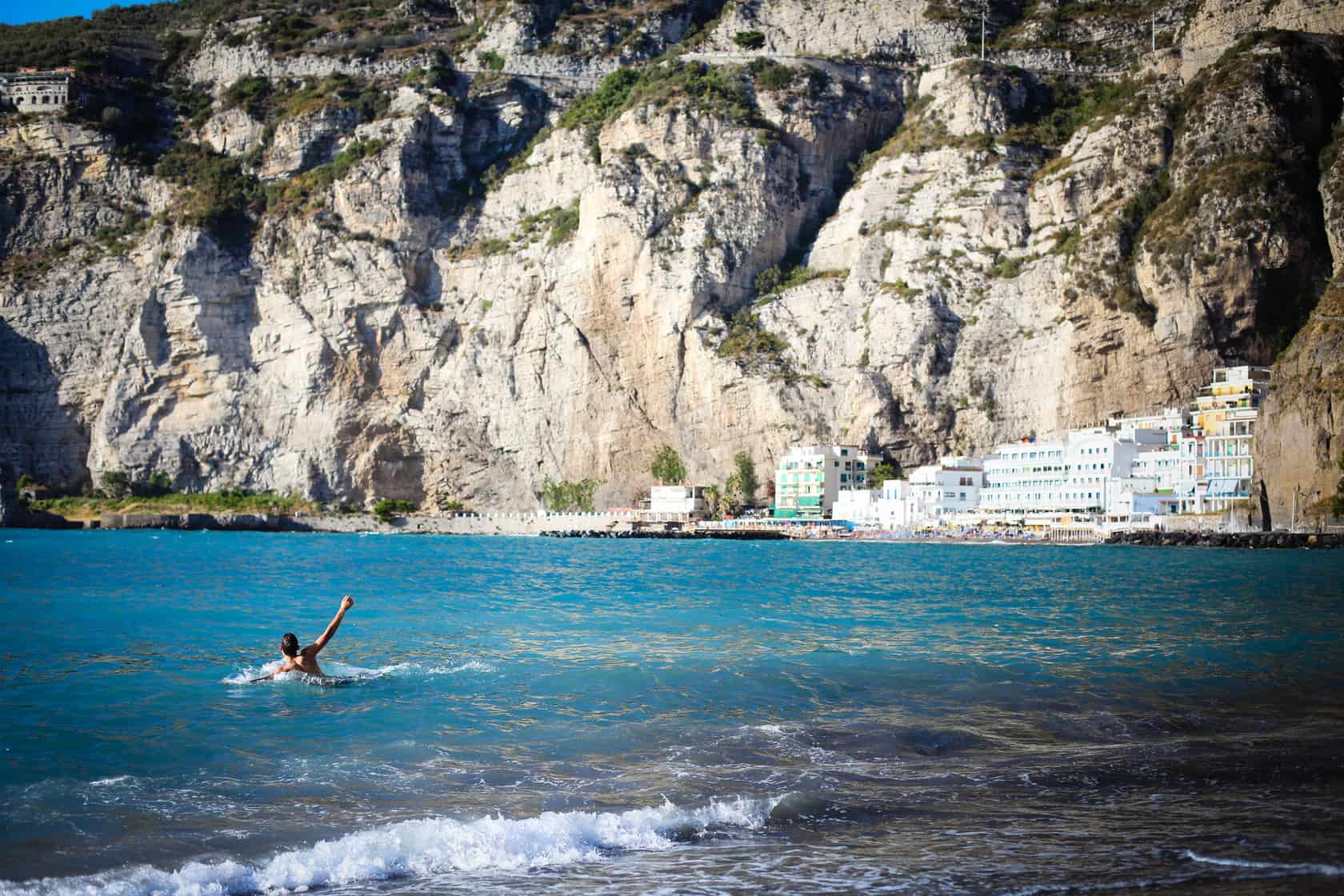
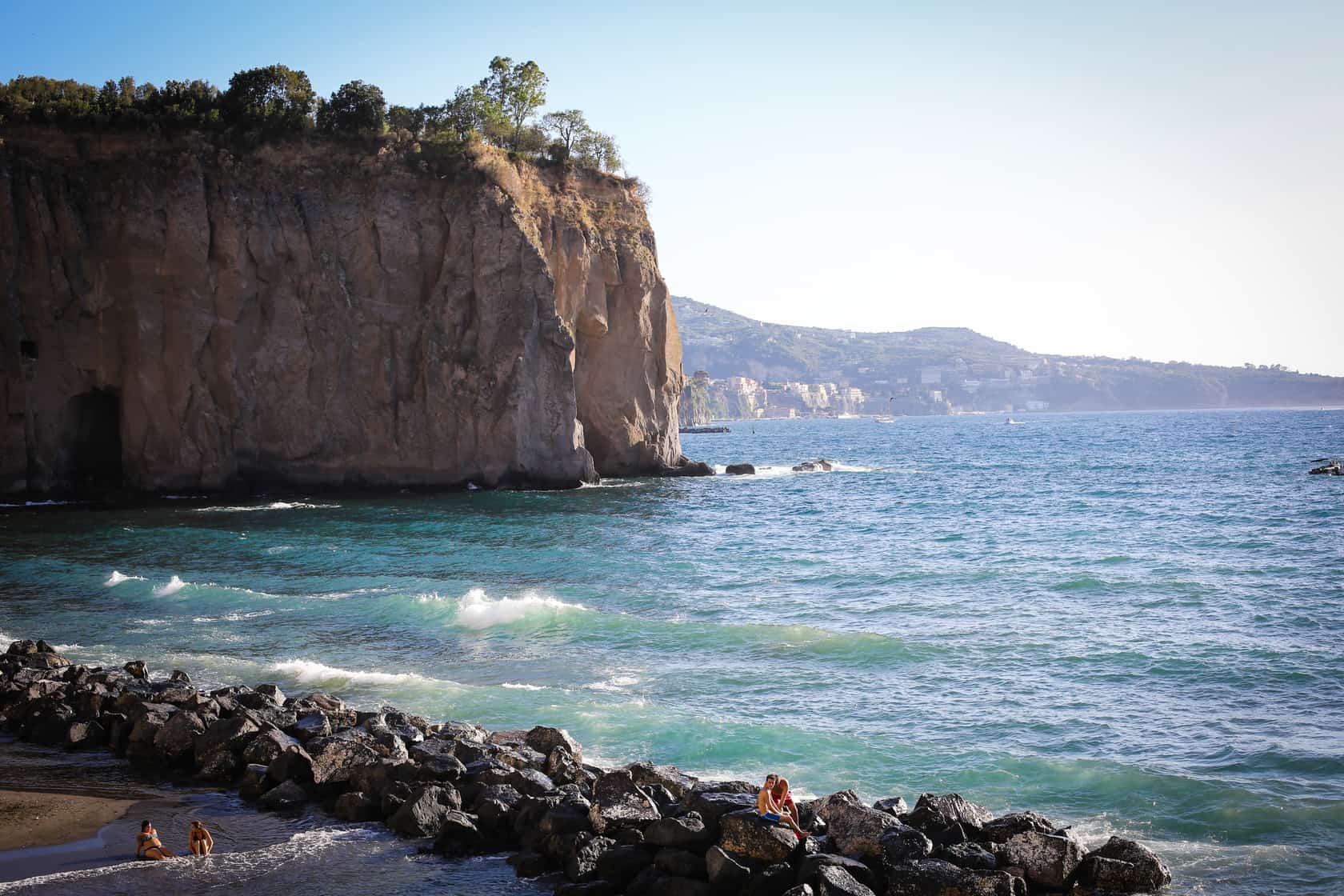
I digress. On to movement.
For both Moisés and myself, swimming was less a primary form of movement, and more of a secondary, relaxed form.
As Moisés put it: “You’re moving all day, you’re hot, maybe you’re running from one town from the other. The best way to recover and refresh is by cooling down…and the best way to do that is by going to the beach.
You can explore by being in the water, you can explore from the water. And after dealing with all the impact from running, and dealing with the traffic, your body asks for these moments. So you get into the water and there are these times when you get into the water, and then afterwards you realize that you’ve been swimming for an hour, just because you didn’t want to get out yet.
It’s about relaxing your muscles, relaxing your mind.
You can keep movement in your days by exploring the beach, exploring the water by taking a snorkel and seeing what is under you. Swimming, and time in the water, is movement in a more relaxed way—more as recovery than exercise.”
Touch the ocean once a day, and find the area’s best swimming spot: check and check.
There are tons of other foot-powered options when traveling around southern Italy. Biking is not out of the question (although the “narrow road” situation could wind up being precarious at times,) and kayaking would be a great way to see the coast. Wind surfing is a thing, for sure, and so is stand-up-paddleboarding.
Tons of people rent mopeds when coming to this area of Italy, and tout it as “the only real way to move” in the region. I’d like to politely digress. Mopeds might be faster, but when it comes to travel, faster is not always better. If you’d like to get to know this area—or any area, in fact—on your feet is the thorough way to do it.



